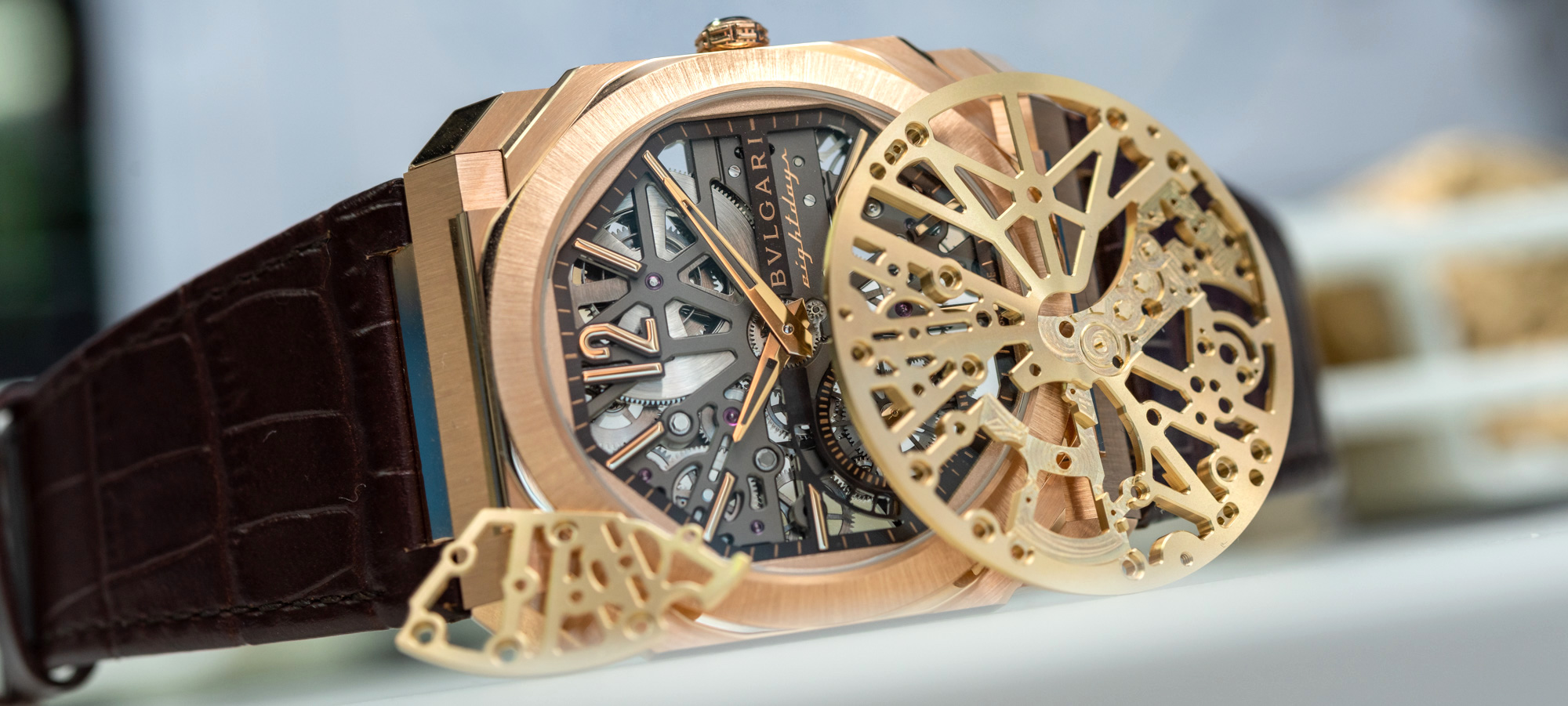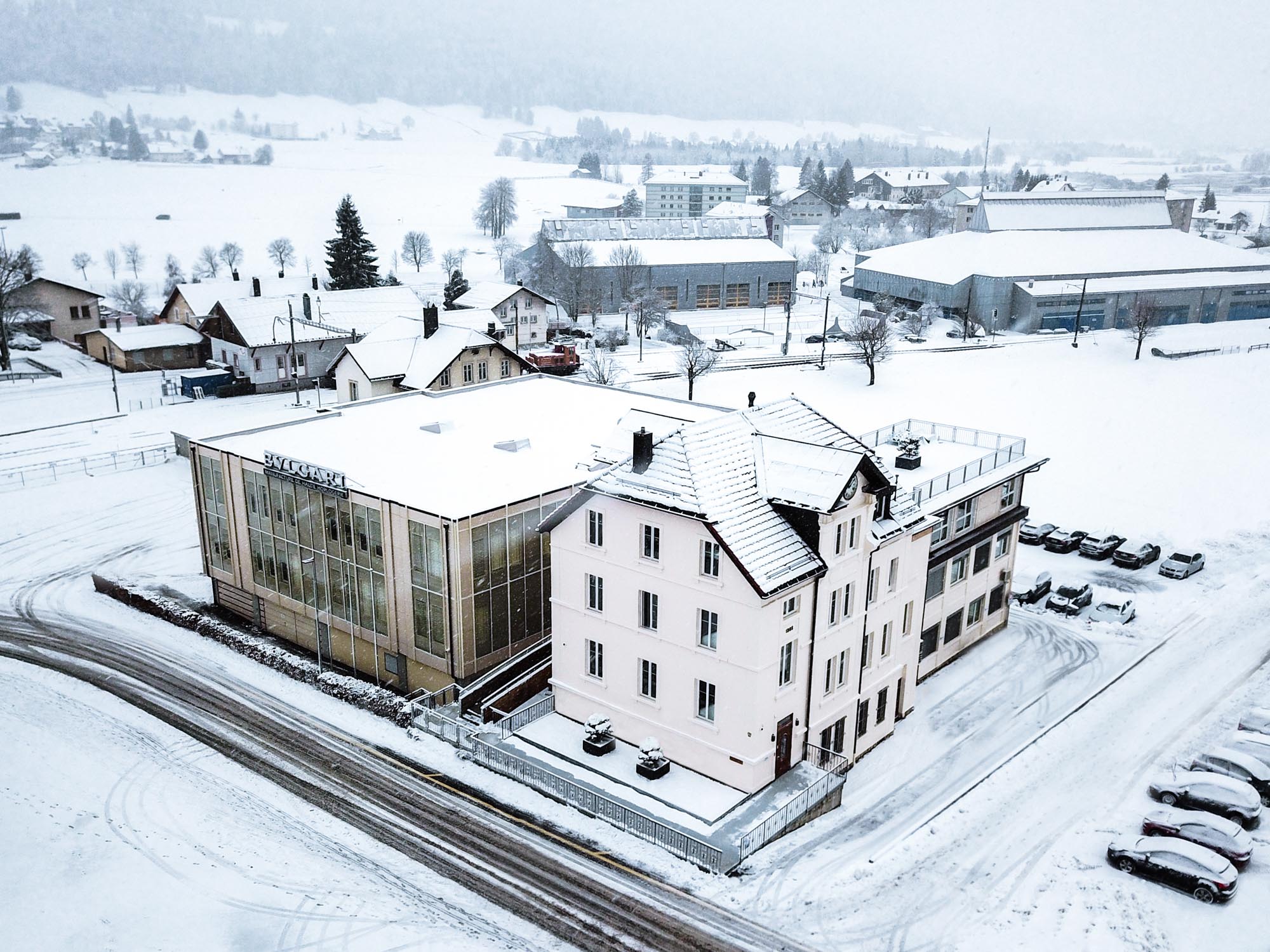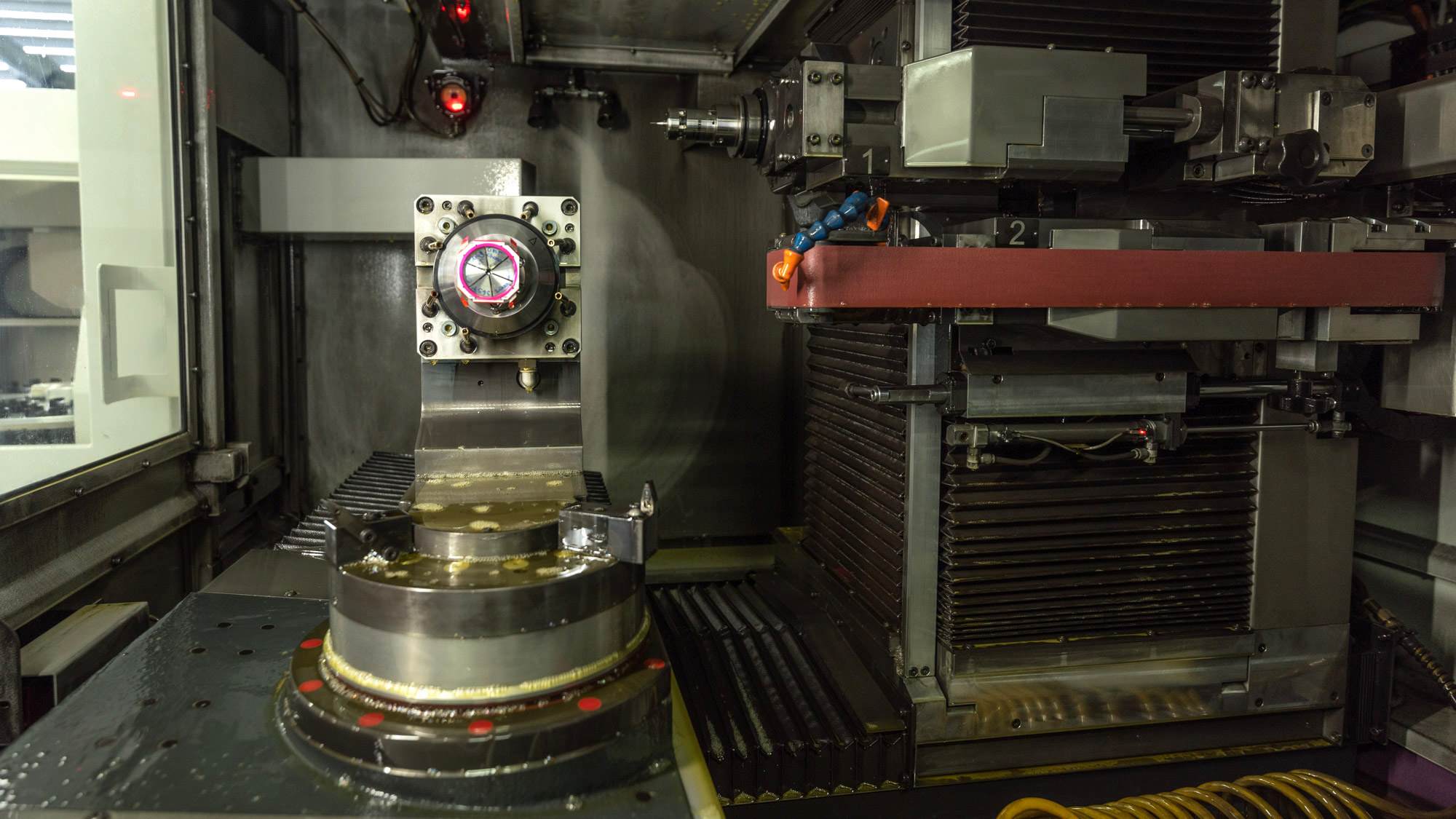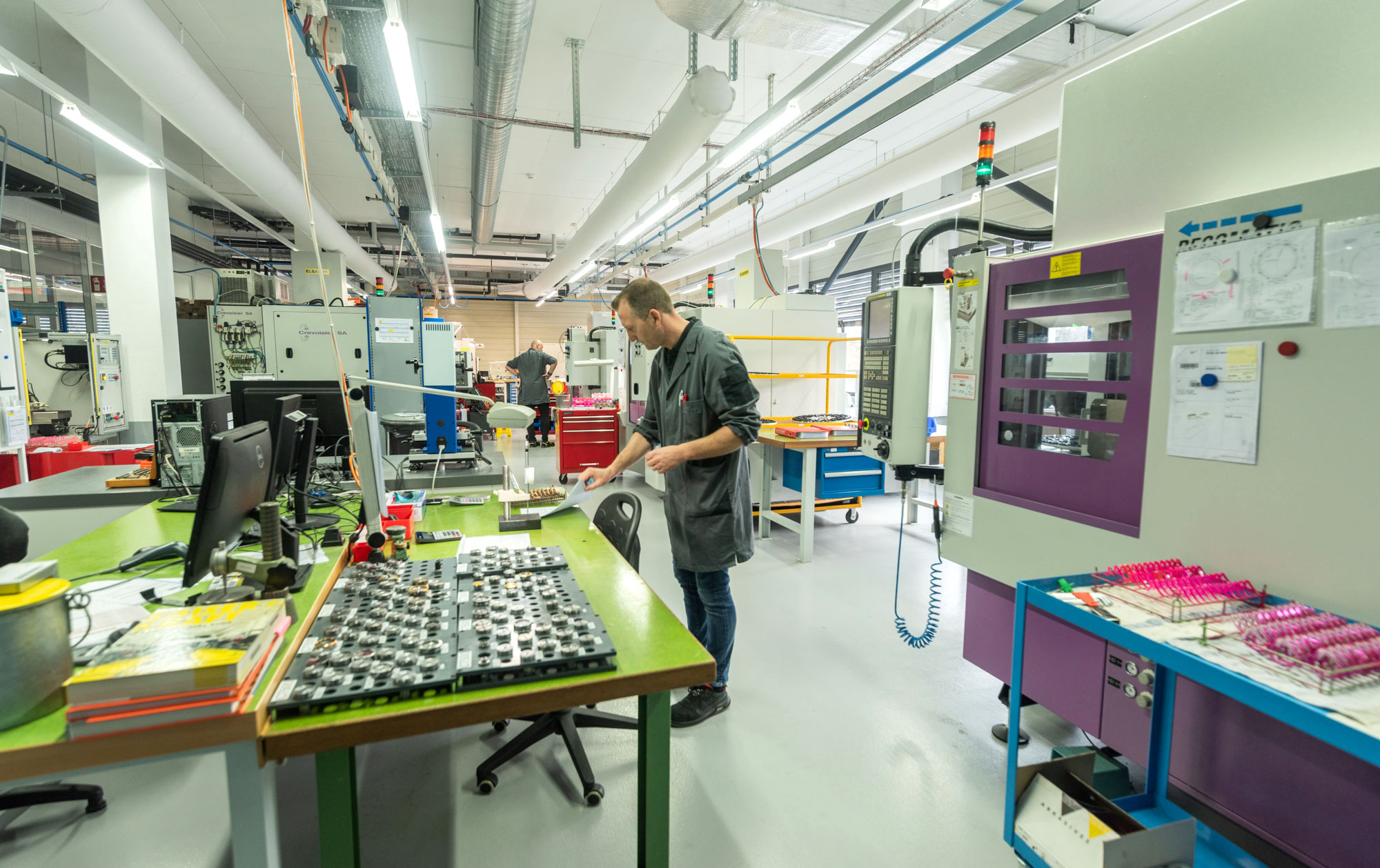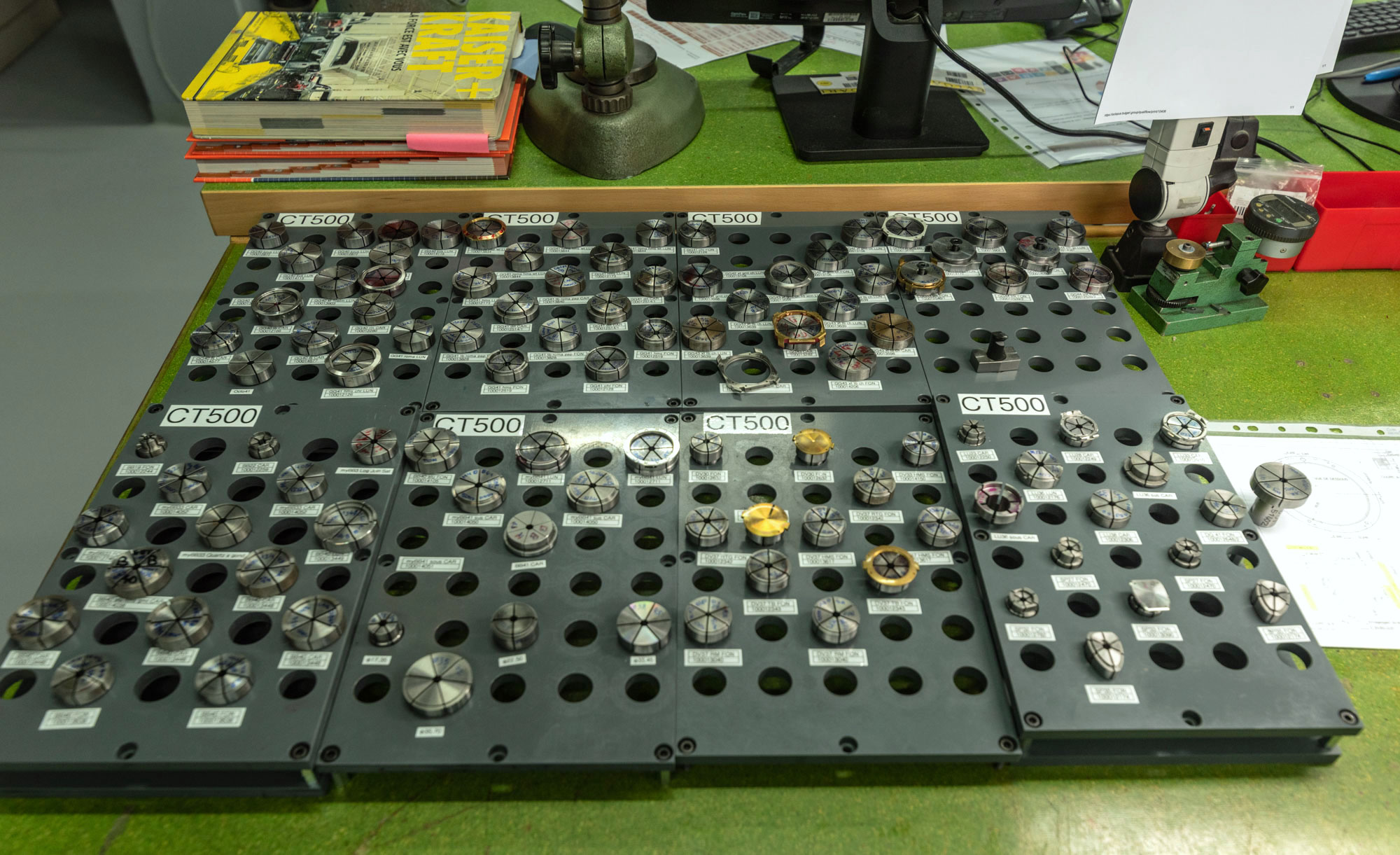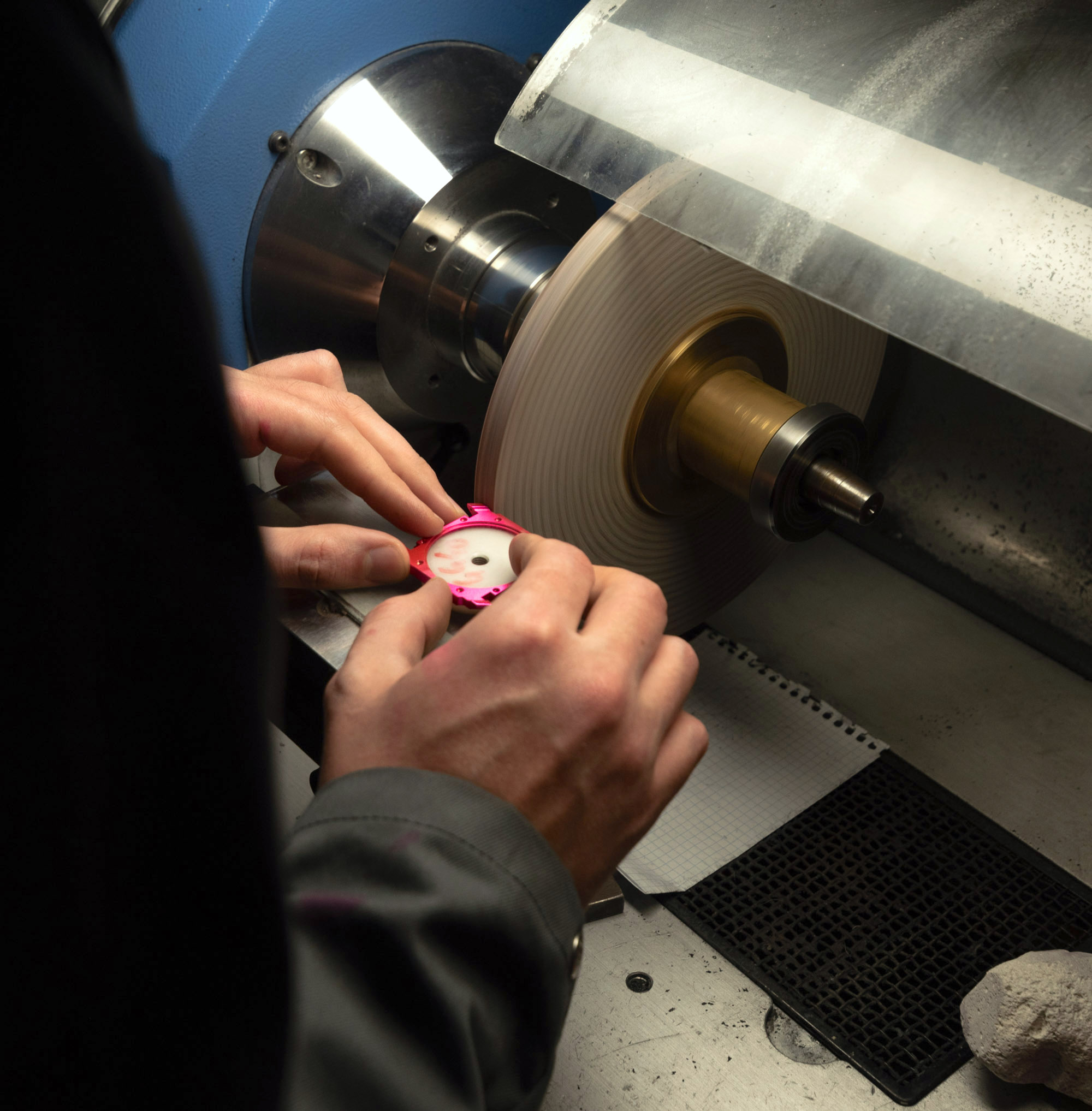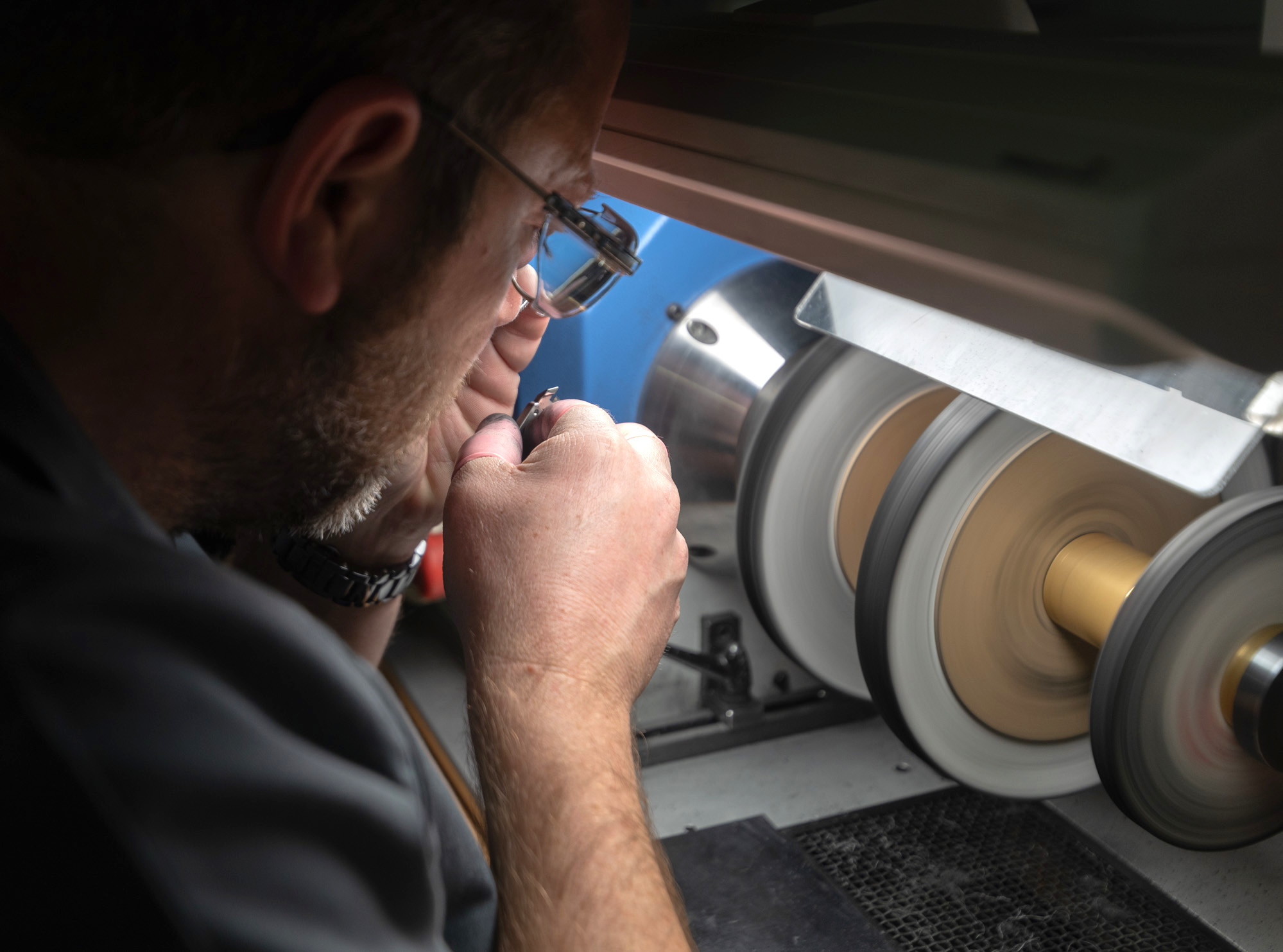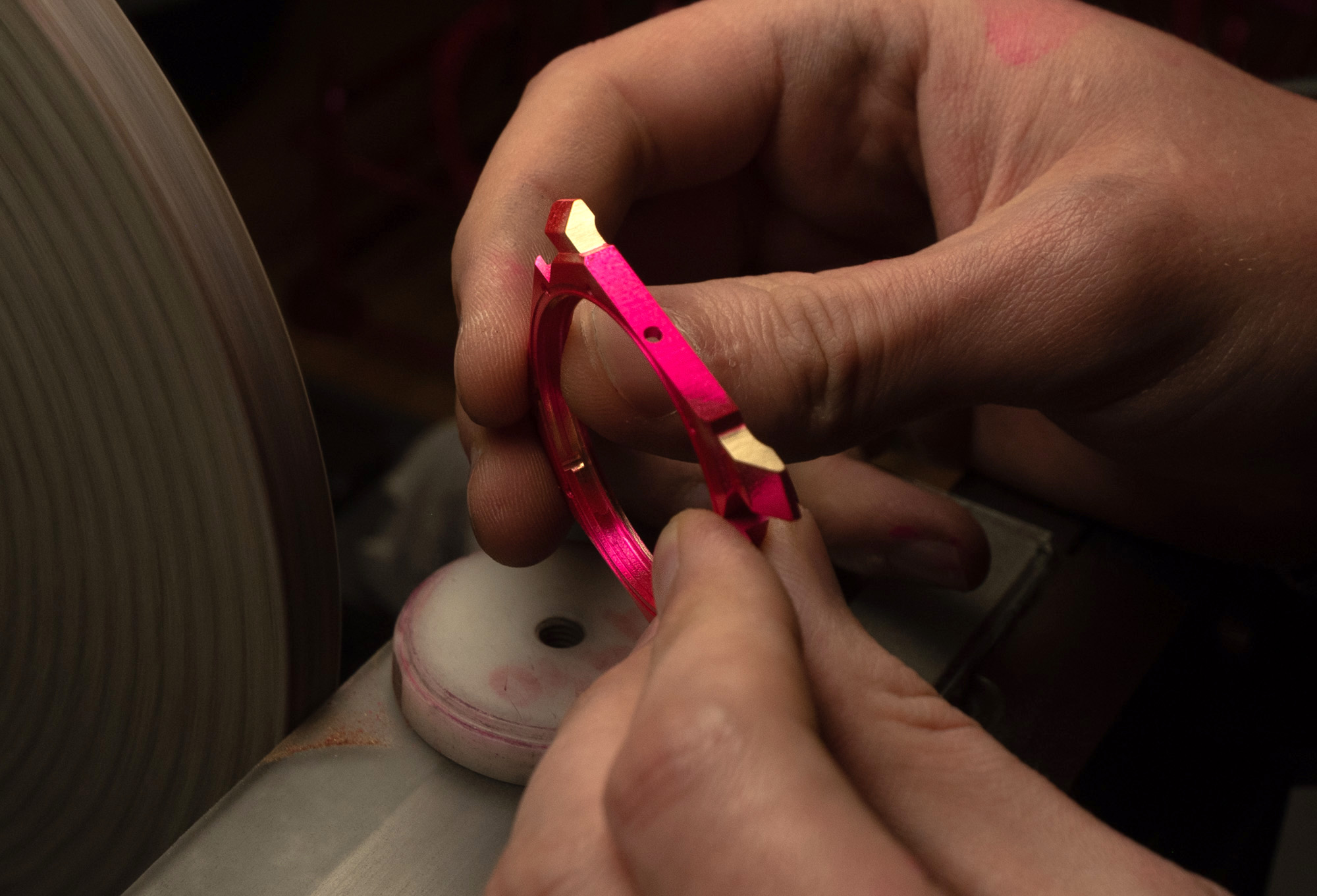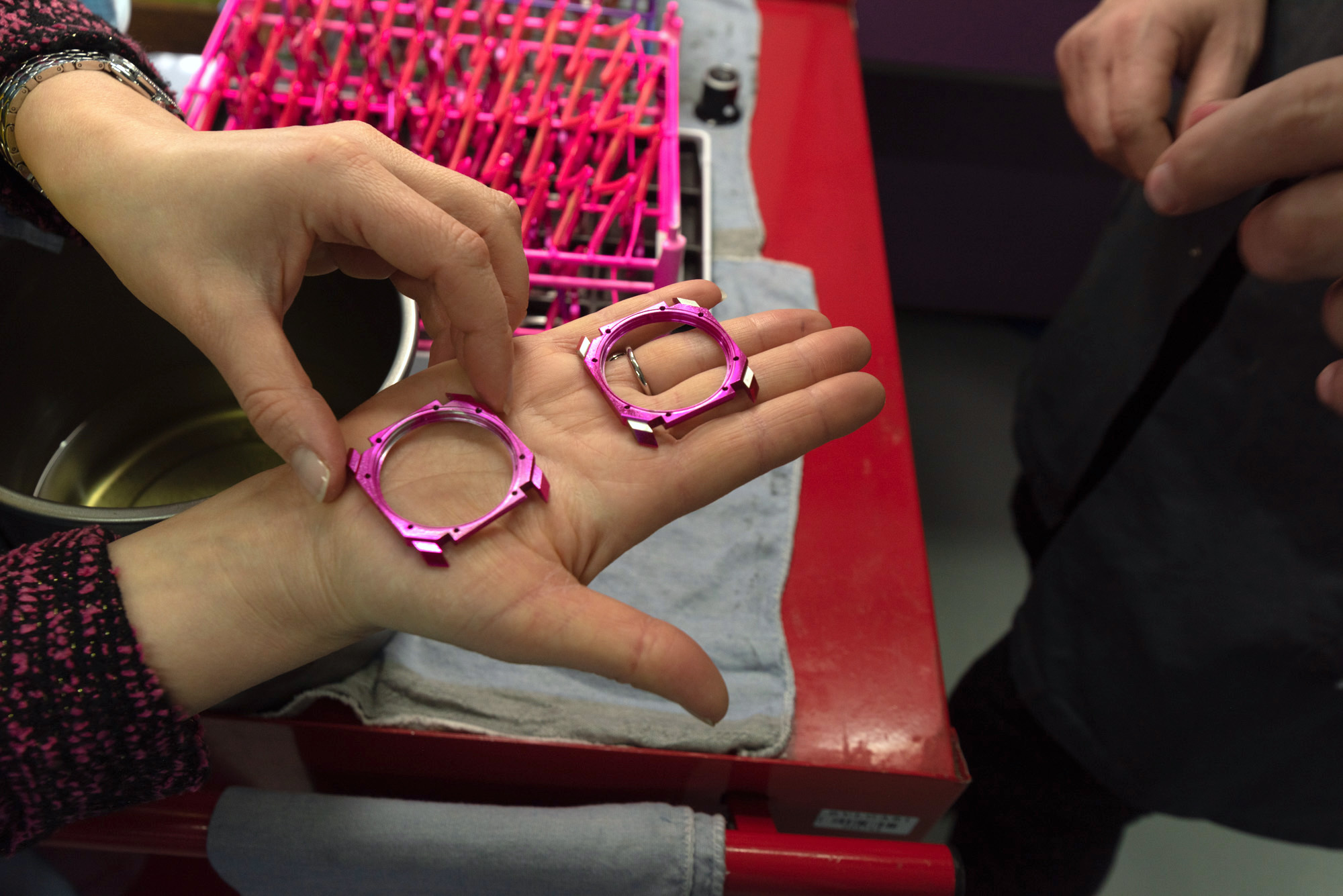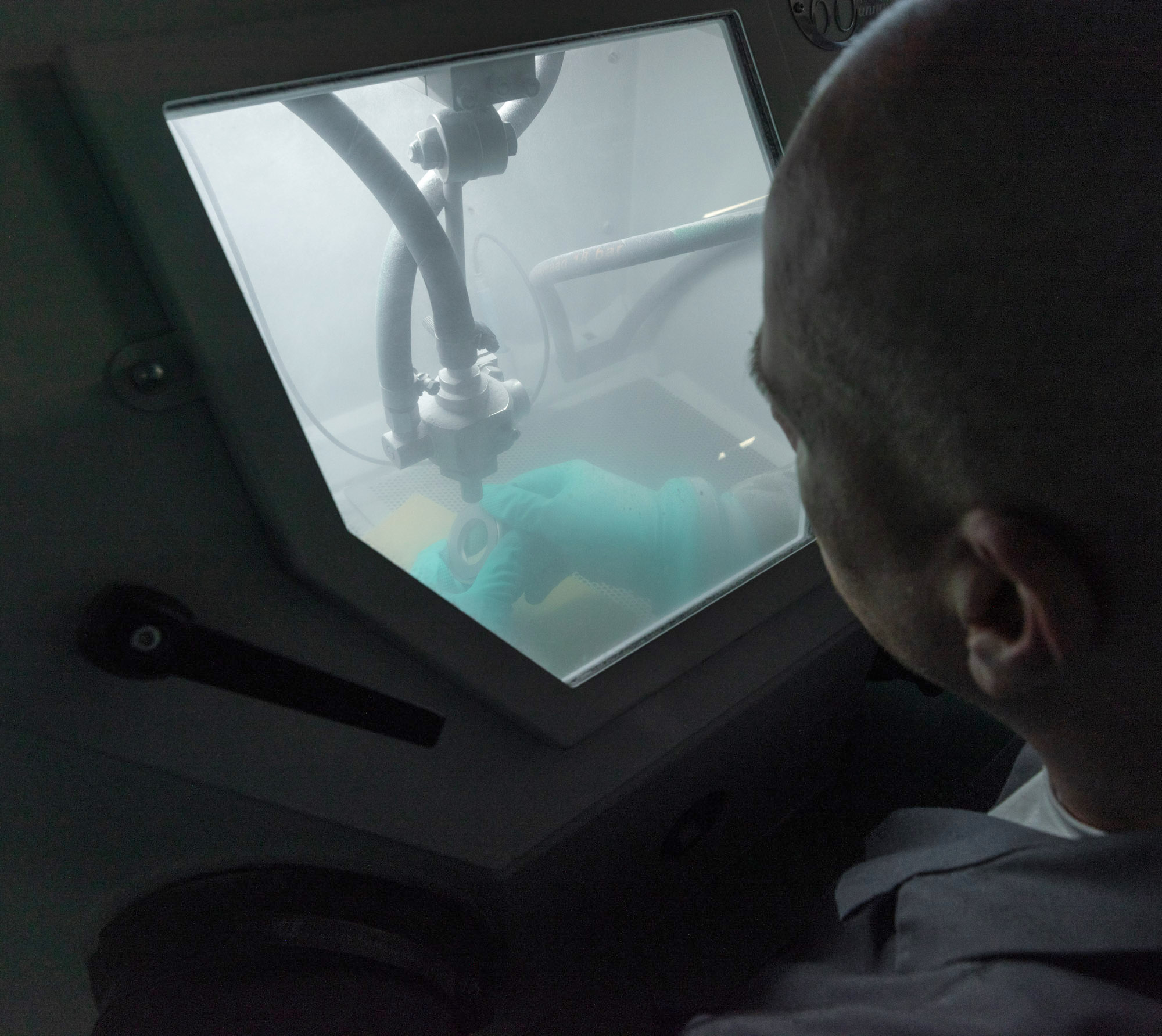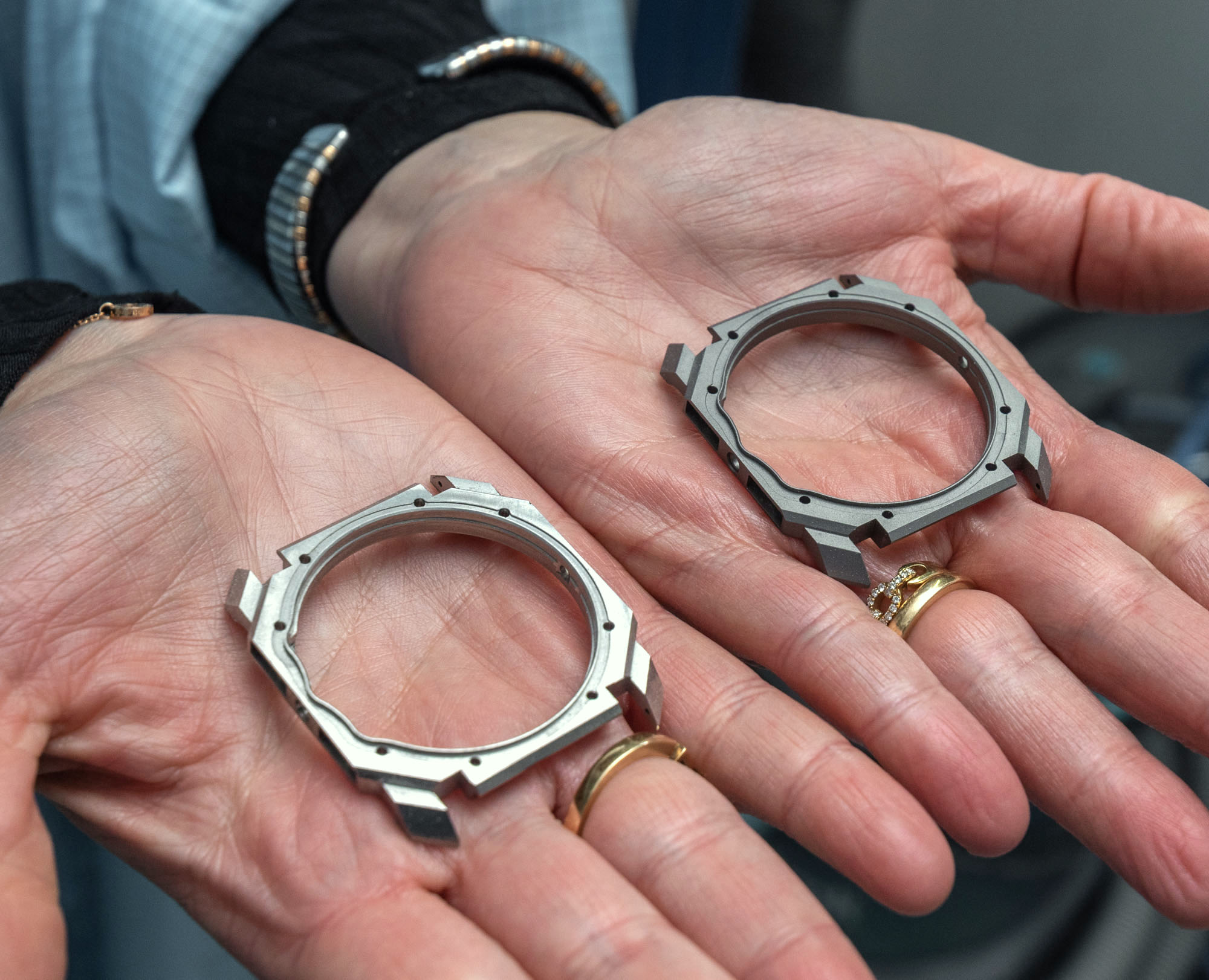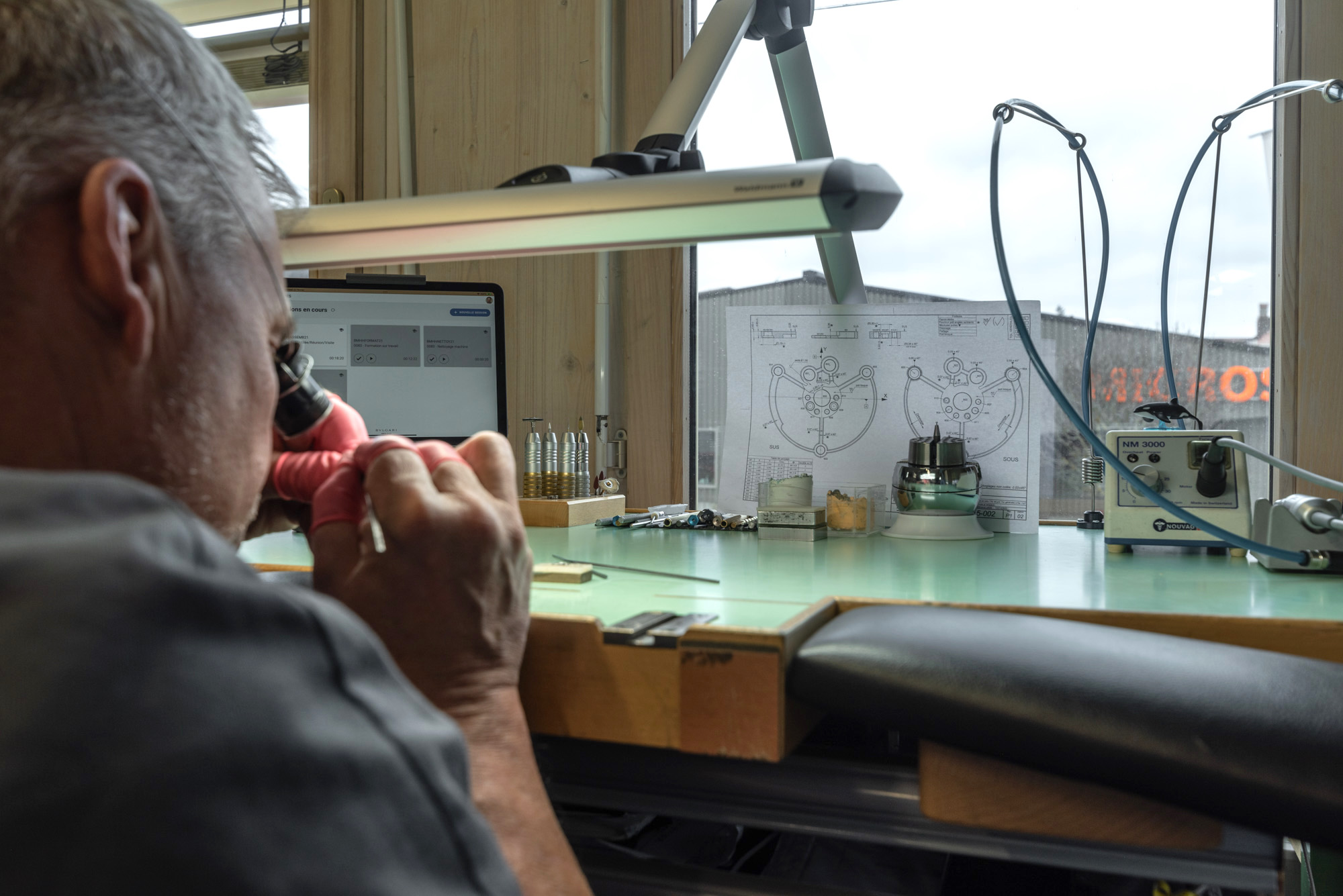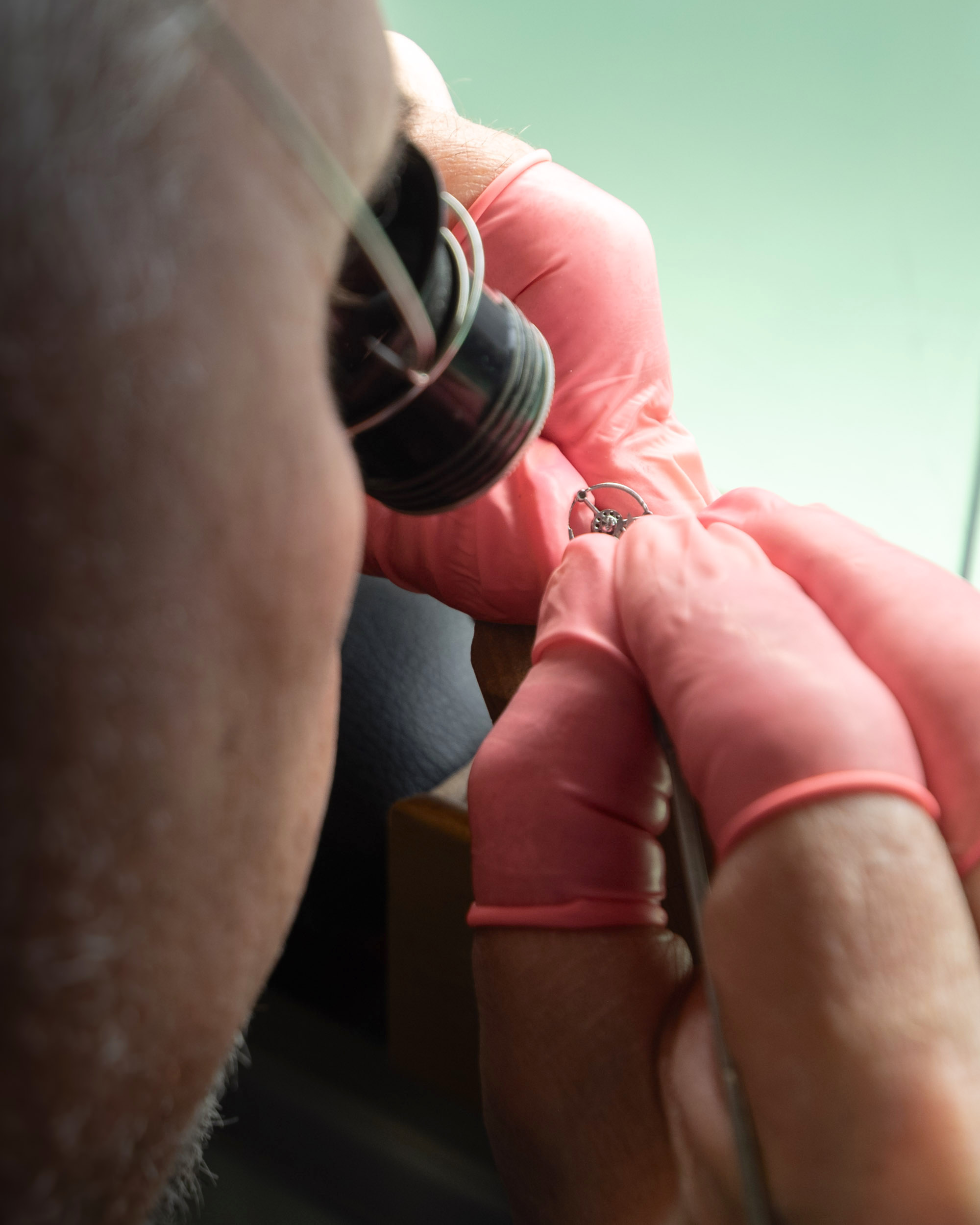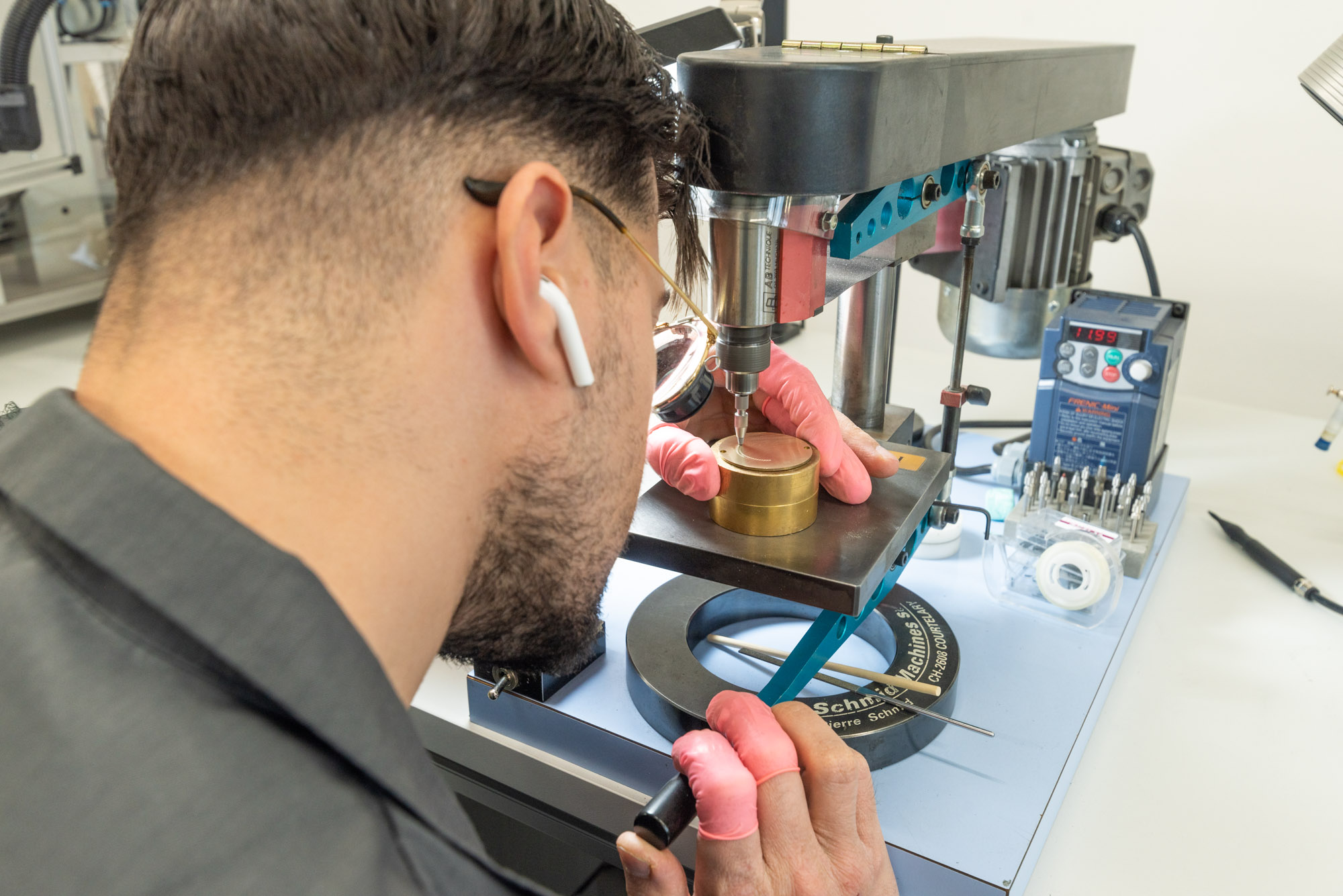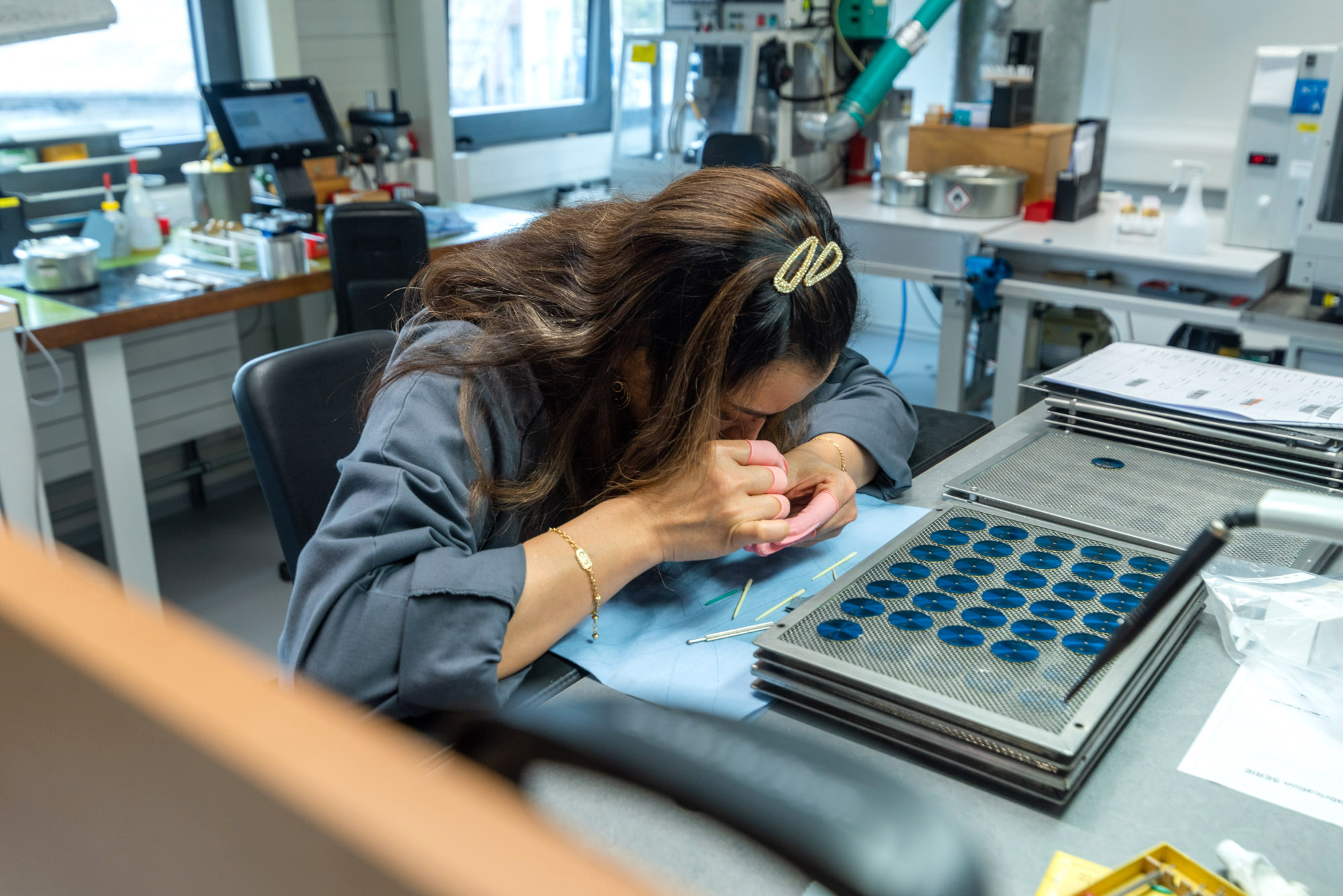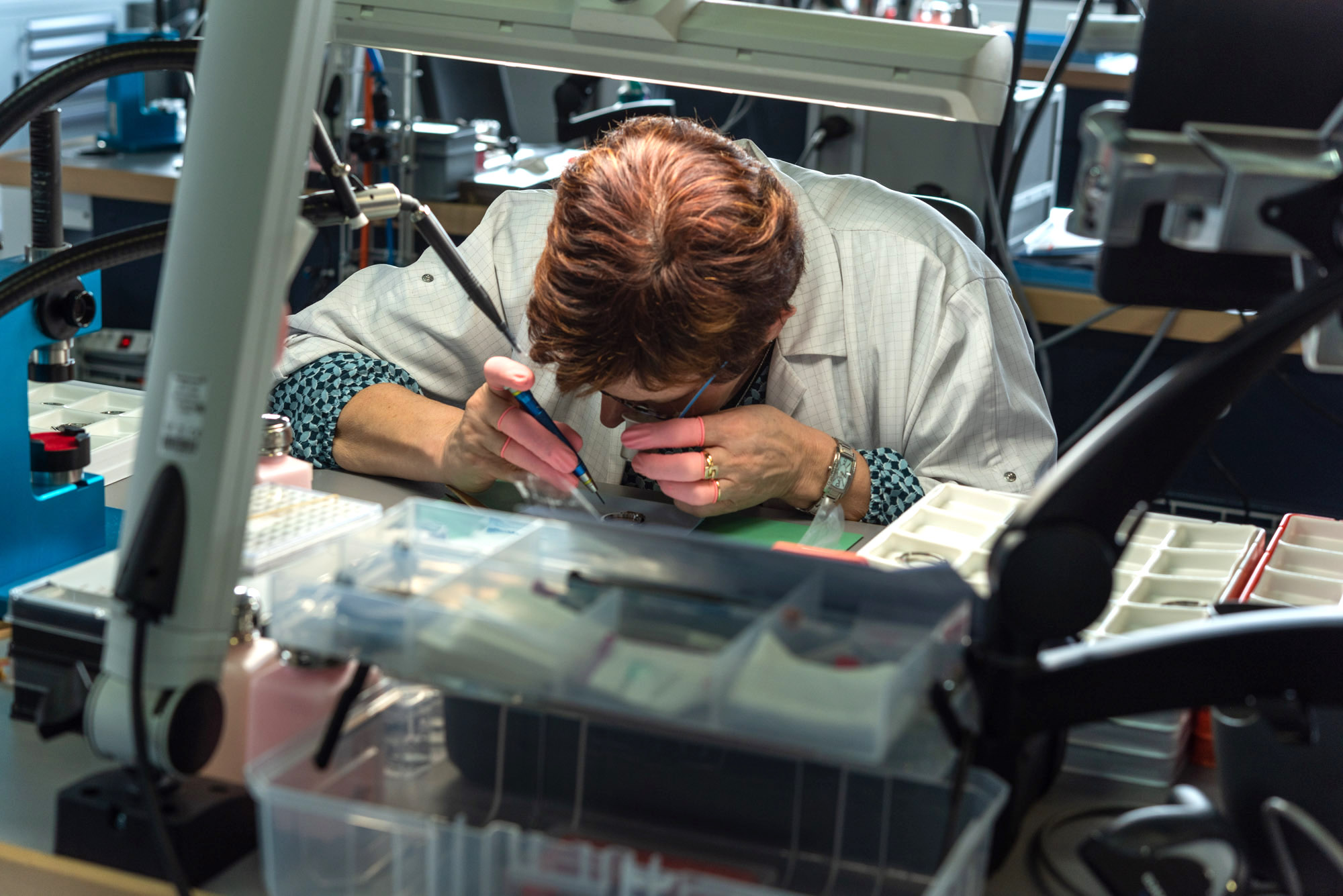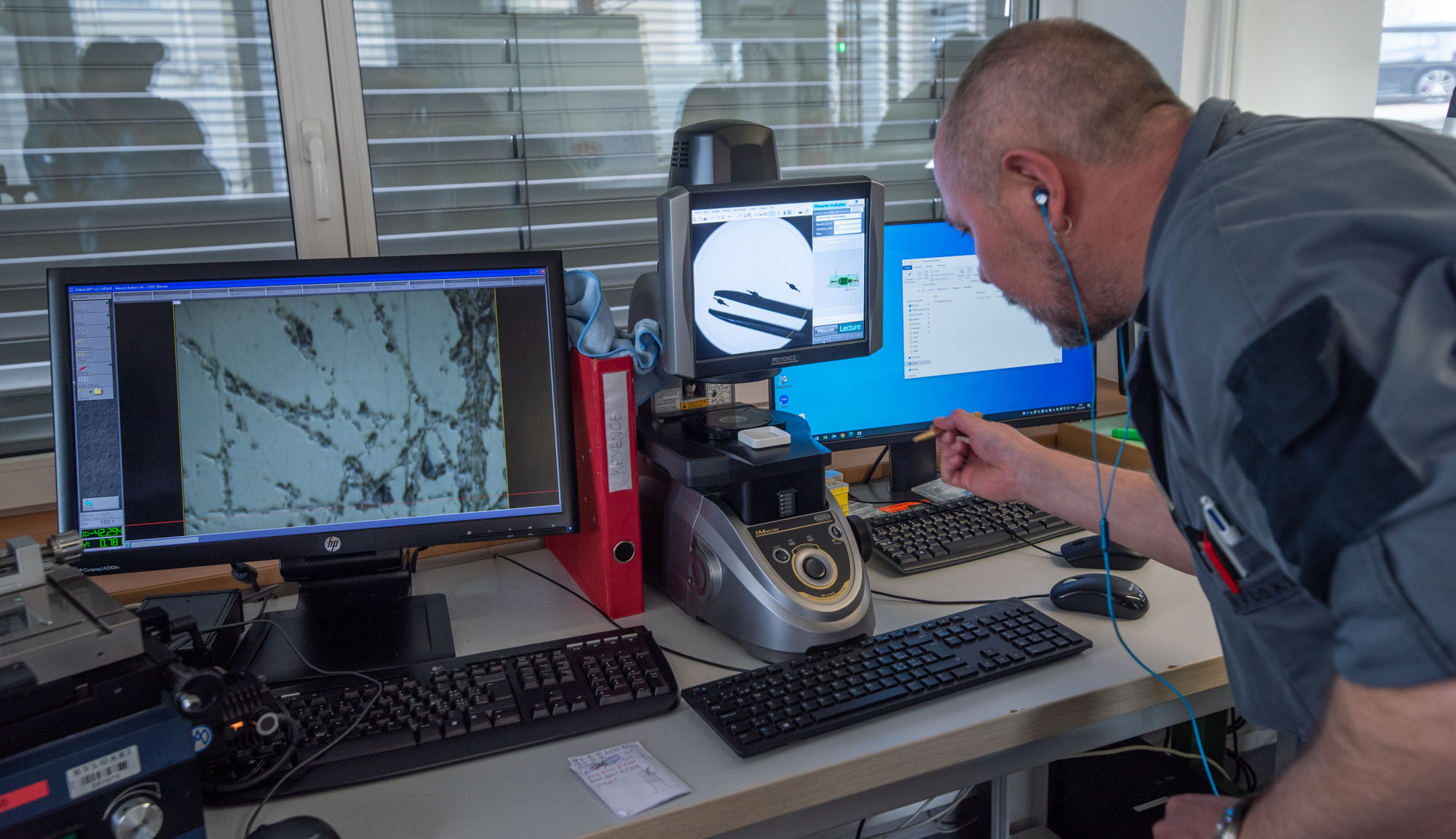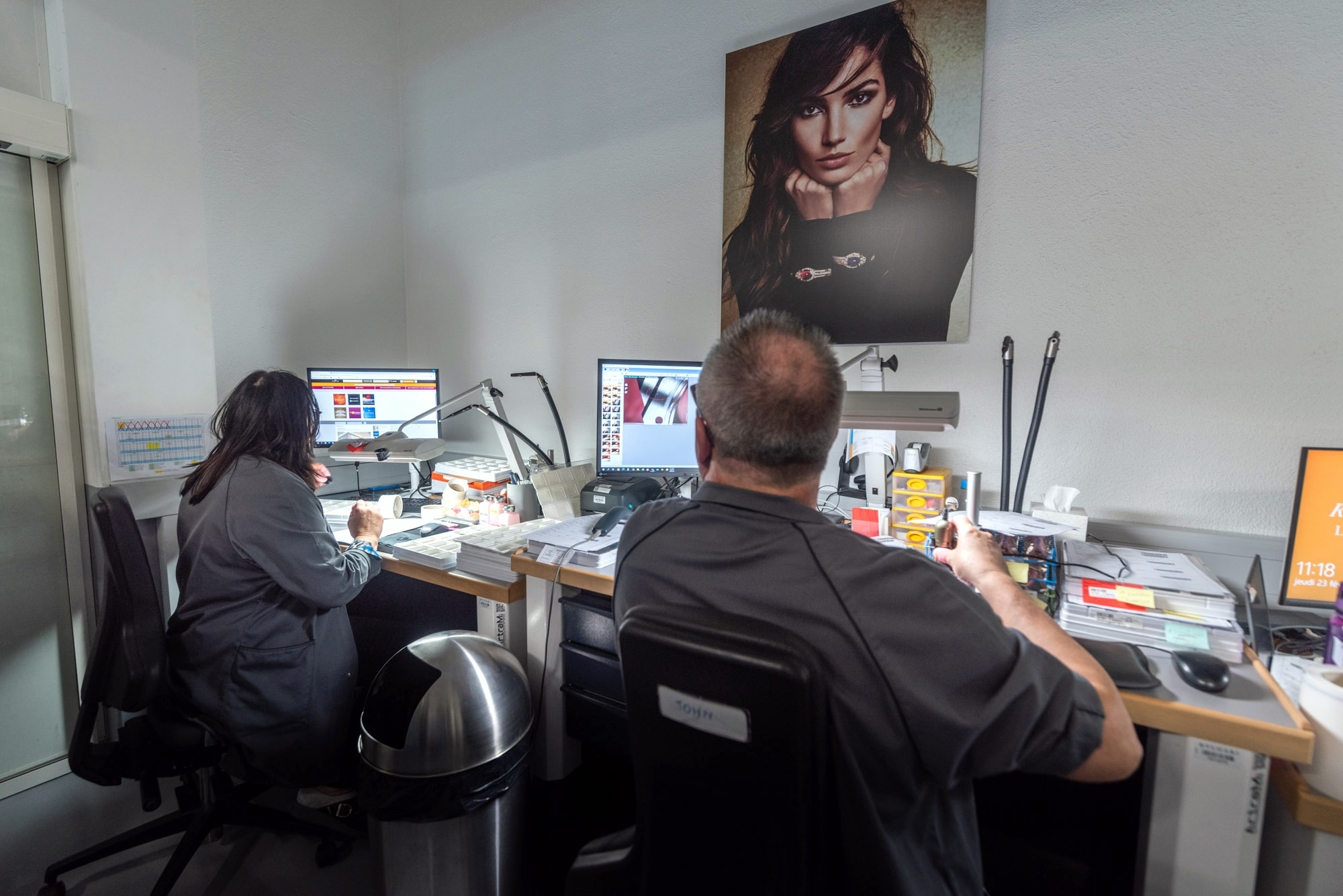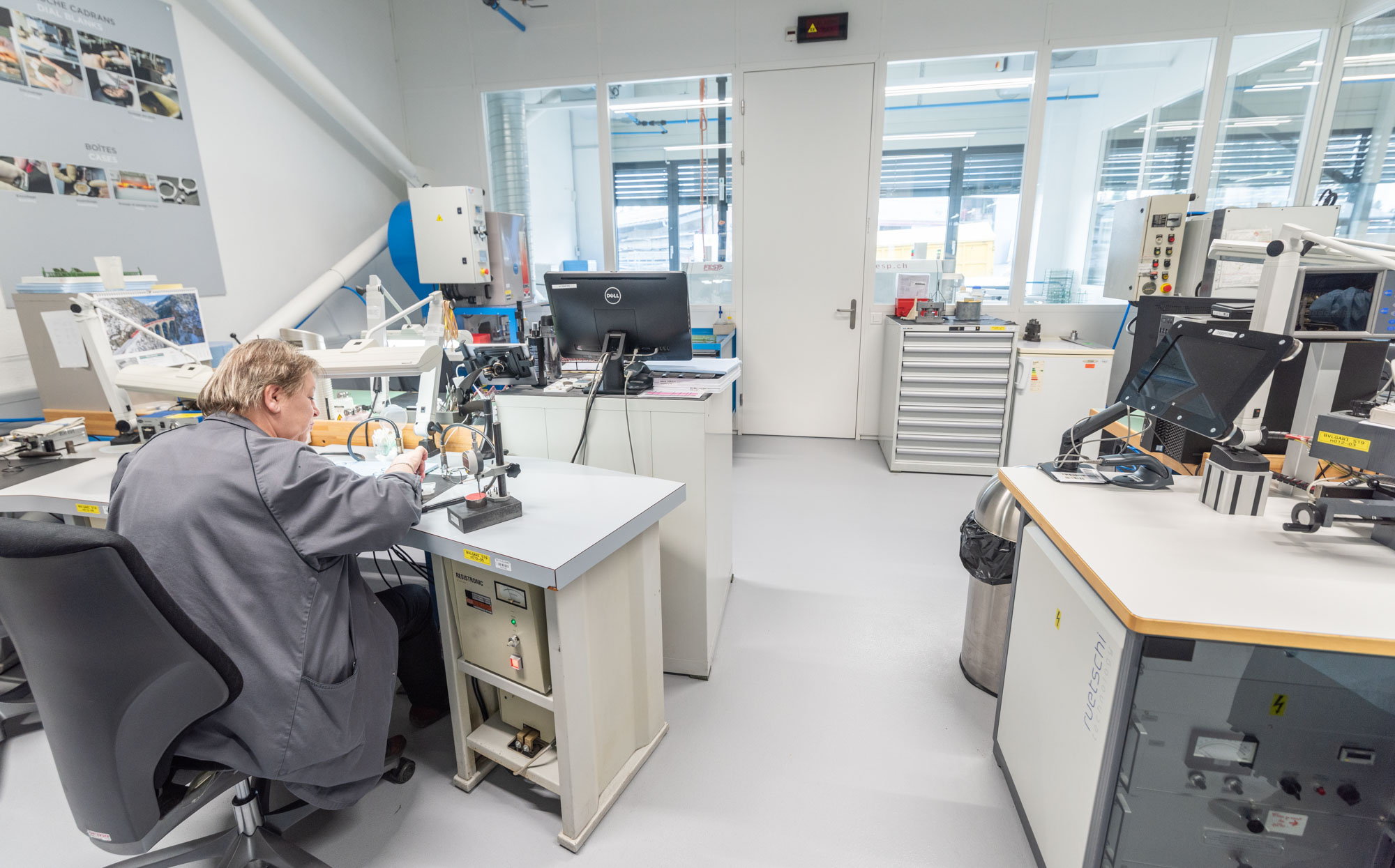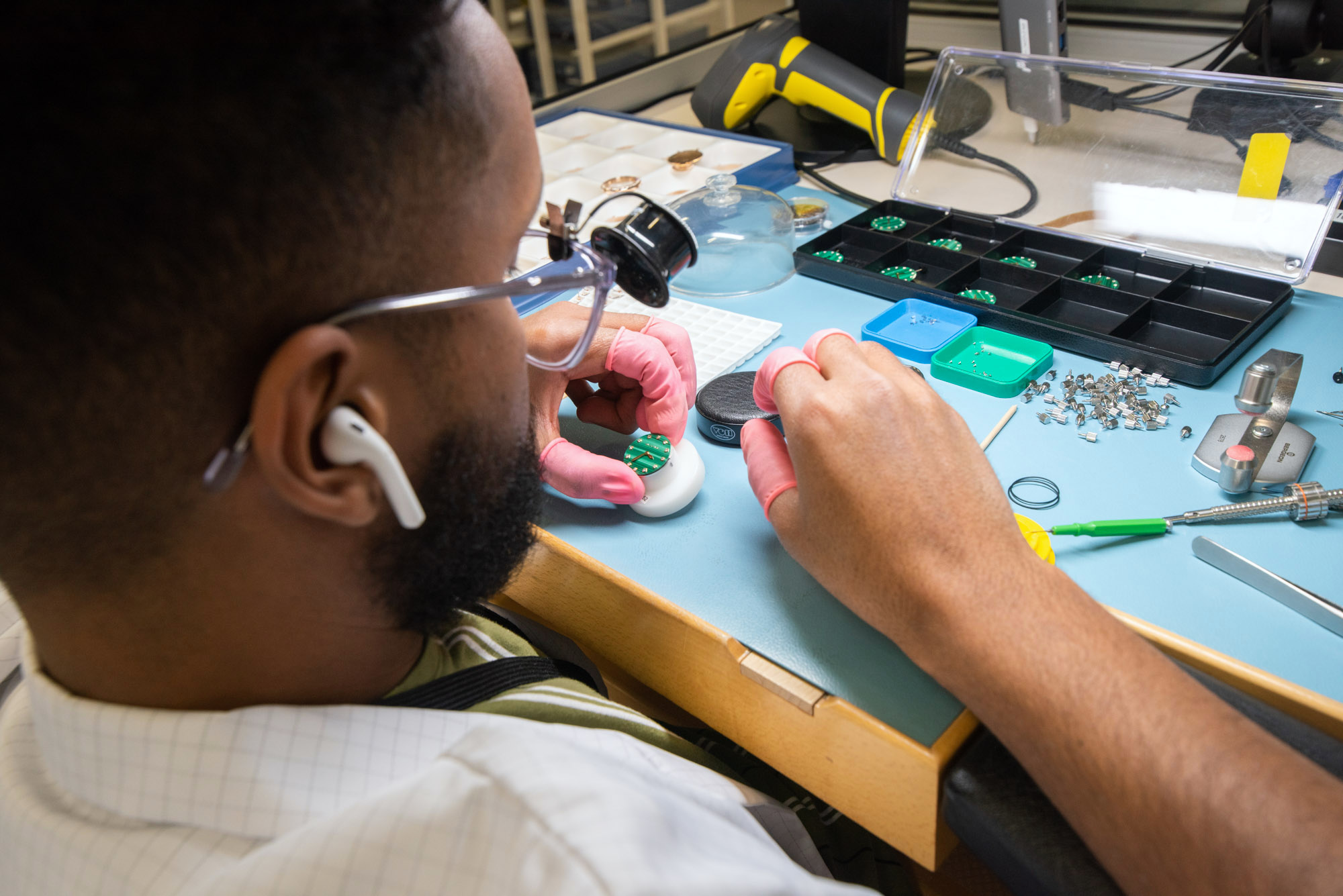
Sponsored post presented on aBlogtoWatch for advertiser
Eight years can make for plenty of opportunities in the traditionally slow-paced watch industry. In that time, Bulgari forged a path that no one could even dream about following, setting eight world records in ultra-thin mechanical watchmaking. It was in late 2015 that aBlogtoWatch last set out to explain the capabilities of Bulgari as a vertically integrated watchmaker, at a point in time when much of Bulgari’s ultra-thin journey still lay ahead. We discovered what the full integration of watch production facilities means — where the cases, dials, bracelets, and movements — and most all movement components — are produced in-house at truly proprietary manufactures for the majority of Bulgari watches. The last few years have proven that such integration can give the Italian-Swiss brand the potential to efficiently develop and produce many unique and specialized timepieces in the near future. Still, even with all that out in the open, nobody could have foretold the remarkable evolution Bulgari would put itself and its manufactures through, and that is what we traveled once again to Switzerland to discover.
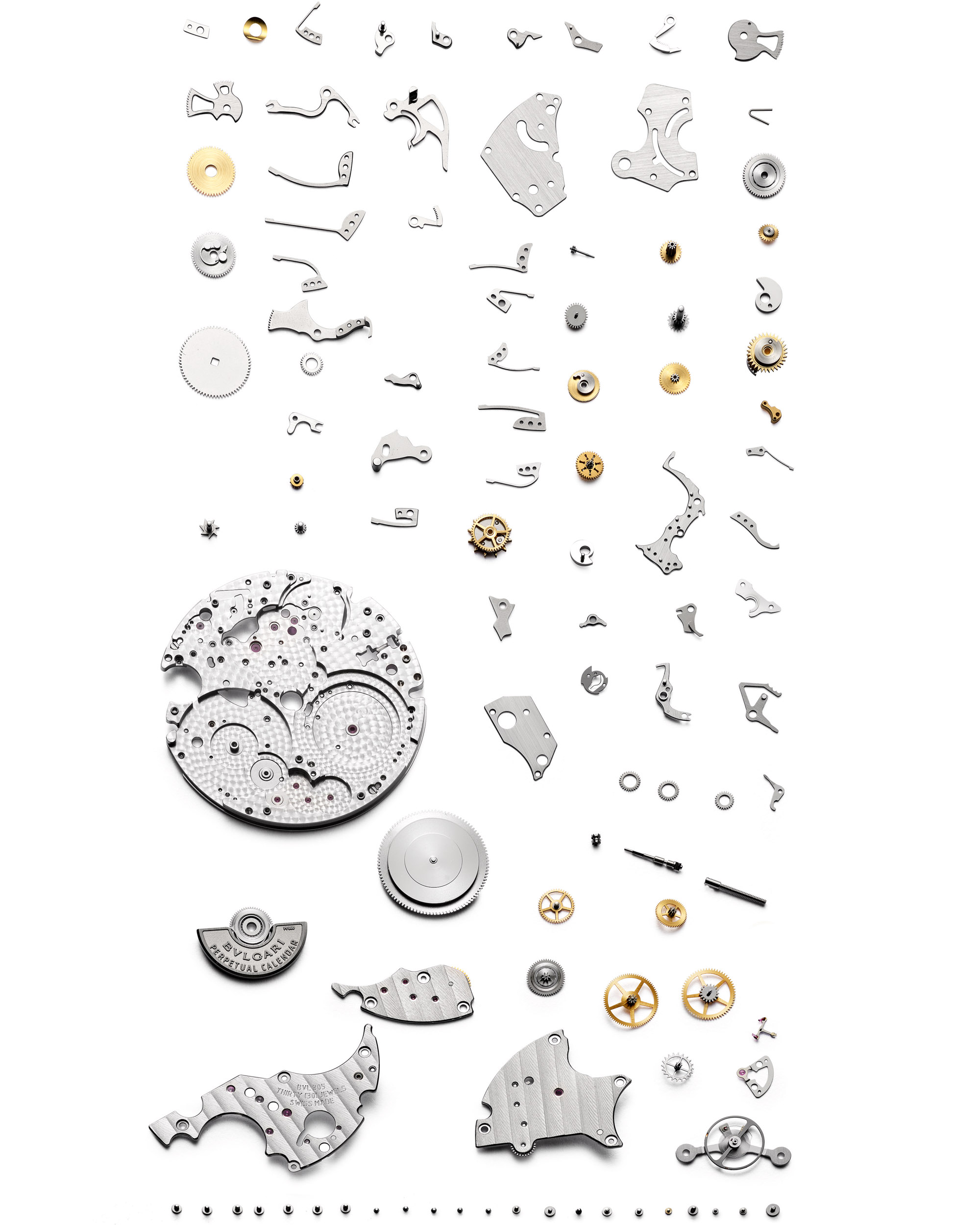
At the time, in the mid-teens, the Finissimo line of record-thin watches was still very much in its infancy. Today, it has set numerous world records in ultra-thin mechanical watchmaking and expanded to offer many more highly impressive models besides those eight references. Breaking a record is an admirable thing, but setting over half a dozen shows not only intent, but lasting capacity to engineer, develop, and realize watches on a different level. This lasting capacity could not have come from anywhere but within. Bulgari has been quietly working on restructuring its facilities to support its journey not only towards new records but also to greater flexibility so that it can offer bold new watches and unleash creativity more frequently. This necessitated leaning on the know-how of its craftspeople in a singular fashion: This time, some eight years later, we returned to Bulgari’s watch manufacturing facilities in Switzerland to discover its truly unique approach to better watchmaking.
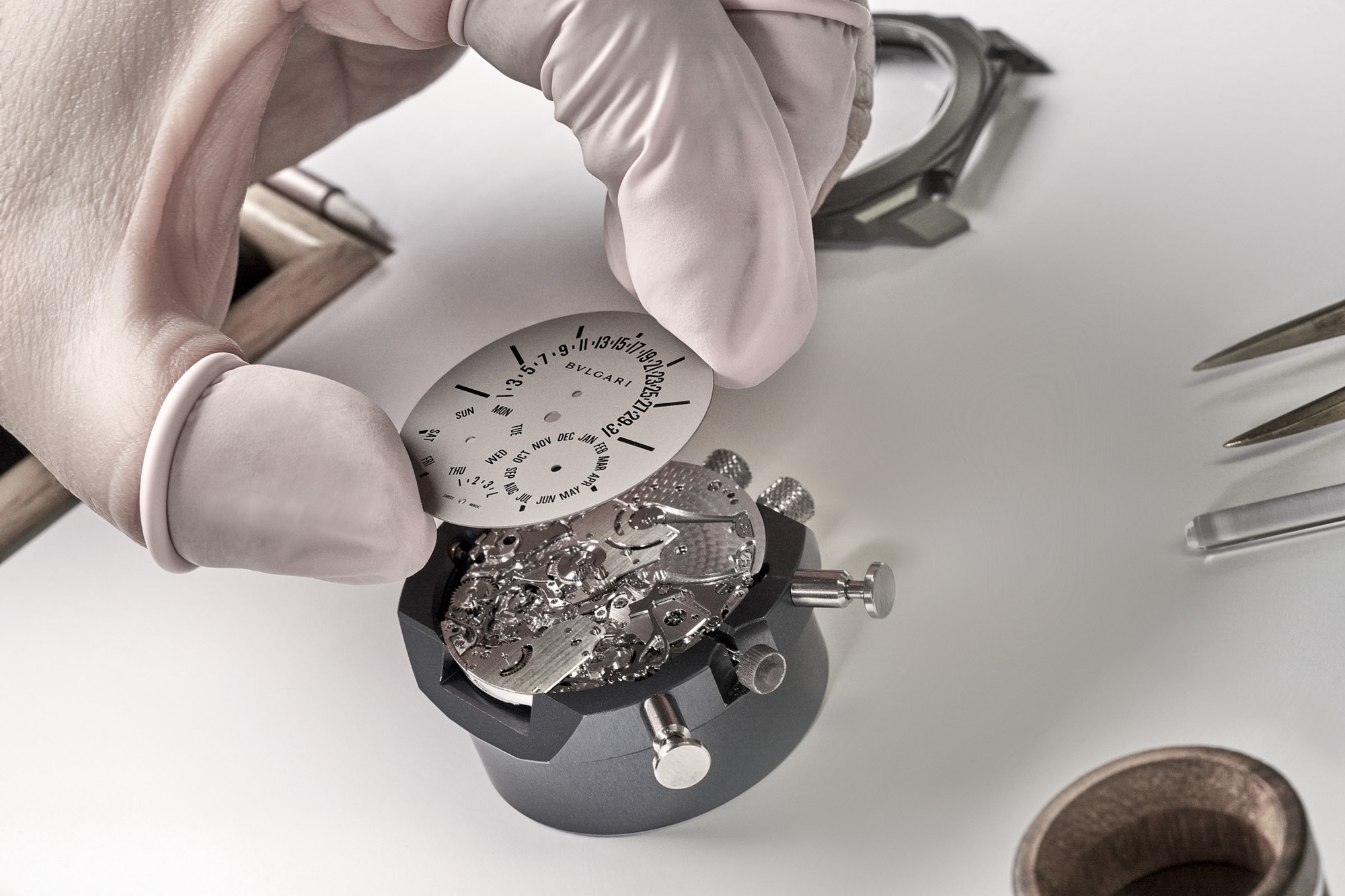
This time, some eight years later, we returned to Bulgari’s watch manufacturing facilities in Switzerland to discover its truly unique approach to better watchmaking.
There are three main sites where Bulgari watches are made today. Bulgari Horlogerie, the headquarters of Bulgari watches, is in Neuchâtel, the French-speaking capital of the Swiss canton Neuchâtel that lies on the northern shore of picturesque Lake Neuchâtel. This massive HQ building with a view of the lake is responsible not only for design and marketing but also for some of the most important steps in making a watch, specifically emboîtage i.e. casing-up, fitting the straps or bracelet, final quality control, as well as the operation of logistics and after-sales servicing. We’ll return here at the end of this article, of course, once we get to these final stages of producing a Bulgari timepiece.
Bulgari Manufacture De Haute Horlogerie is in Le Sentier, rooted right at the heart of Watch Valley — because yes, there is a Watch Valley in the “watch country” that is Switzerland. Bulgari isn’t shy to admit that it had to be here, at the heart of it all, if it wanted access to all the talent and know-how — Swiss craftspeople are yet to develop a reputation for mobility, not even within their motherland. It is here, in Le Sentier, that movements, including many of their tiniest and most delicate unique components, are crafted and assembled. From the three-hand and date BVL 191 automatic all the way to the 923-component Grande Sonnerie Perpetual Calendar, in-house Bulgari movements are manufactured and assembled piece-by-piece by Bulgari Manufacture De Haute Horlogerie.
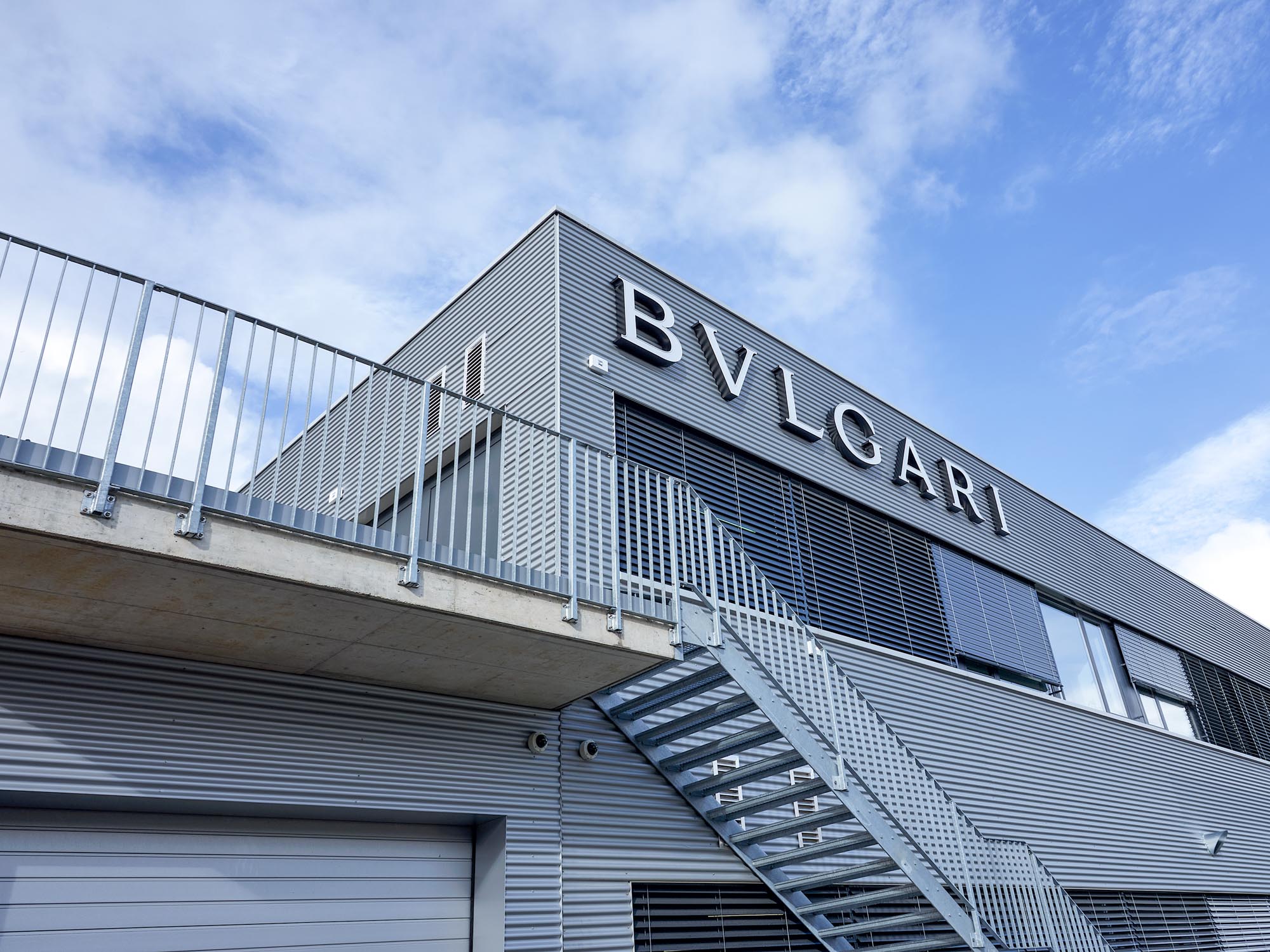
Bulgari Manufacture d’Habillage in Saignelégier where dials, cases, and bracelets are made for Bulgari watches.
The final and absolutely essential element of Bulgari’s fully integrated watchmaking capacities is Bulgari Manufacture d’Habillage in Saignelégier, one of the most prestigious and capable manufacturers of high-end watch cases and dials in the world. It is also here that Bulgari has performed the most meaningful developments over the last eight years by the unprecedented integration of its separate dial and case production facilities under one roof, here in Saignelégier. Among these three sites, some 400 employees are focused on designing, engineering, producing, sub-assembling, and assembling the movements, cases, dials, and finished Bulgari watches.

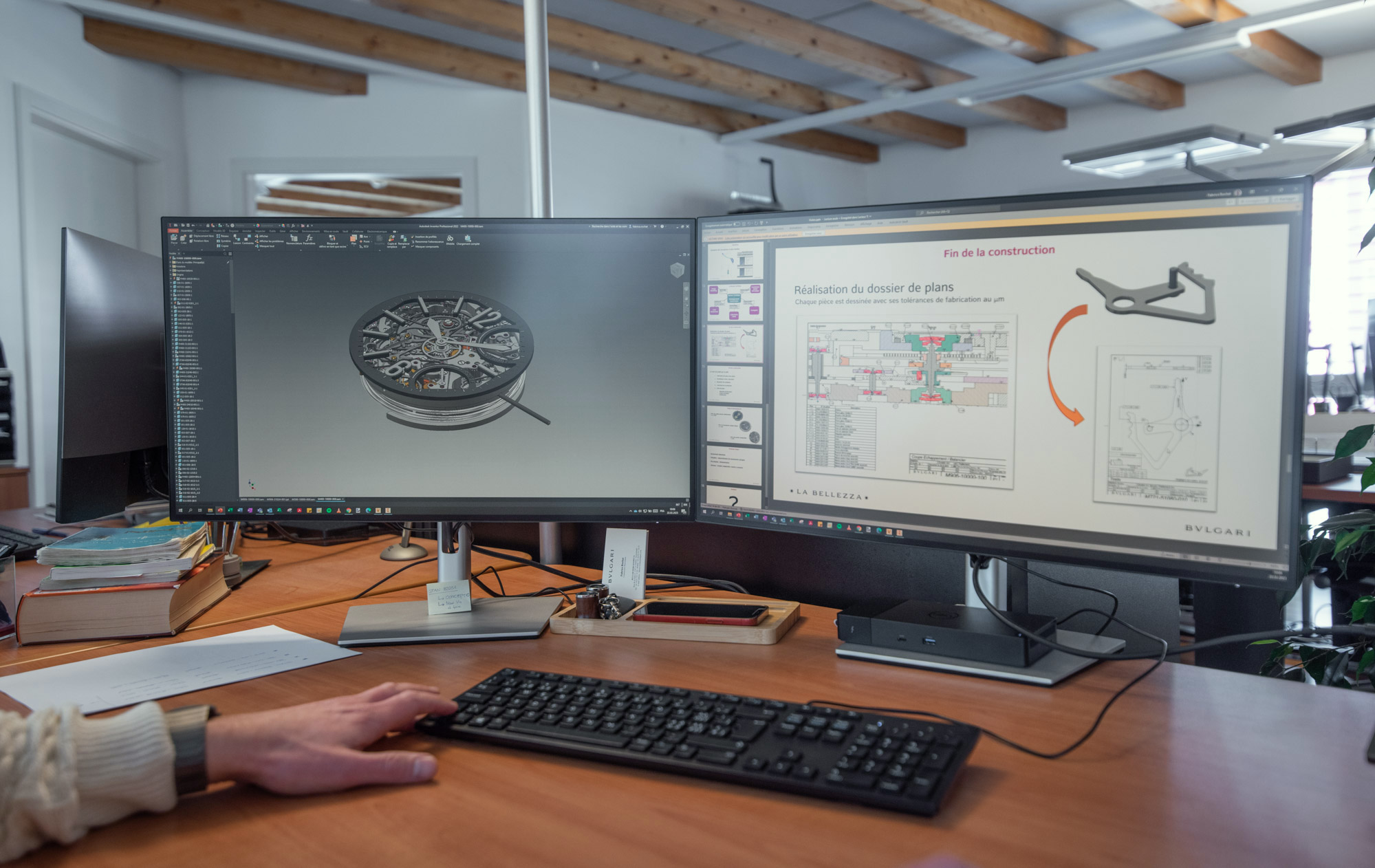
Processes begin with a design concept by Fabrizio Buonamassa (catch him discussing Bulgari watch design here), as he works with the engineers at the three facilities on the details of how his sketches could be turned into a wearable, durable, beautiful case, bracelet, dial, and movement. A core truth of the modern Swiss luxury watch industry is that neither Bulgari nor any other brand could manage to create such a wide range of different models from such a wide variety of materials without direct access to a proprietary manufacturing background. Prototyping something as apparently simple as a new dial or case design is often turned down by non-exclusive specialist suppliers because they don’t tend to have the bandwidth to dedicate the time and effort this would require to please all their clients.

Careful planning is necessitated for two main reasons. The first is to stay as close as possible to the original concept of the design team. As is true for the iconic products of the automotive and consumer electronics industry, many of the most important and successful luxury watches come from creative teams who think outside the box. Thinking outside the box on paper is already a trial of a company’s capabilities, but turning a lofty idea into a product that can be repeatedly crafted in a beautiful and efficient way is where a new dimension of challenges truly opens up. Through unlimited dedication and investment, Bulgari has acquired the teams with the required know-how and the machinery with the necessary capabilities to support this transition from paper to metal.
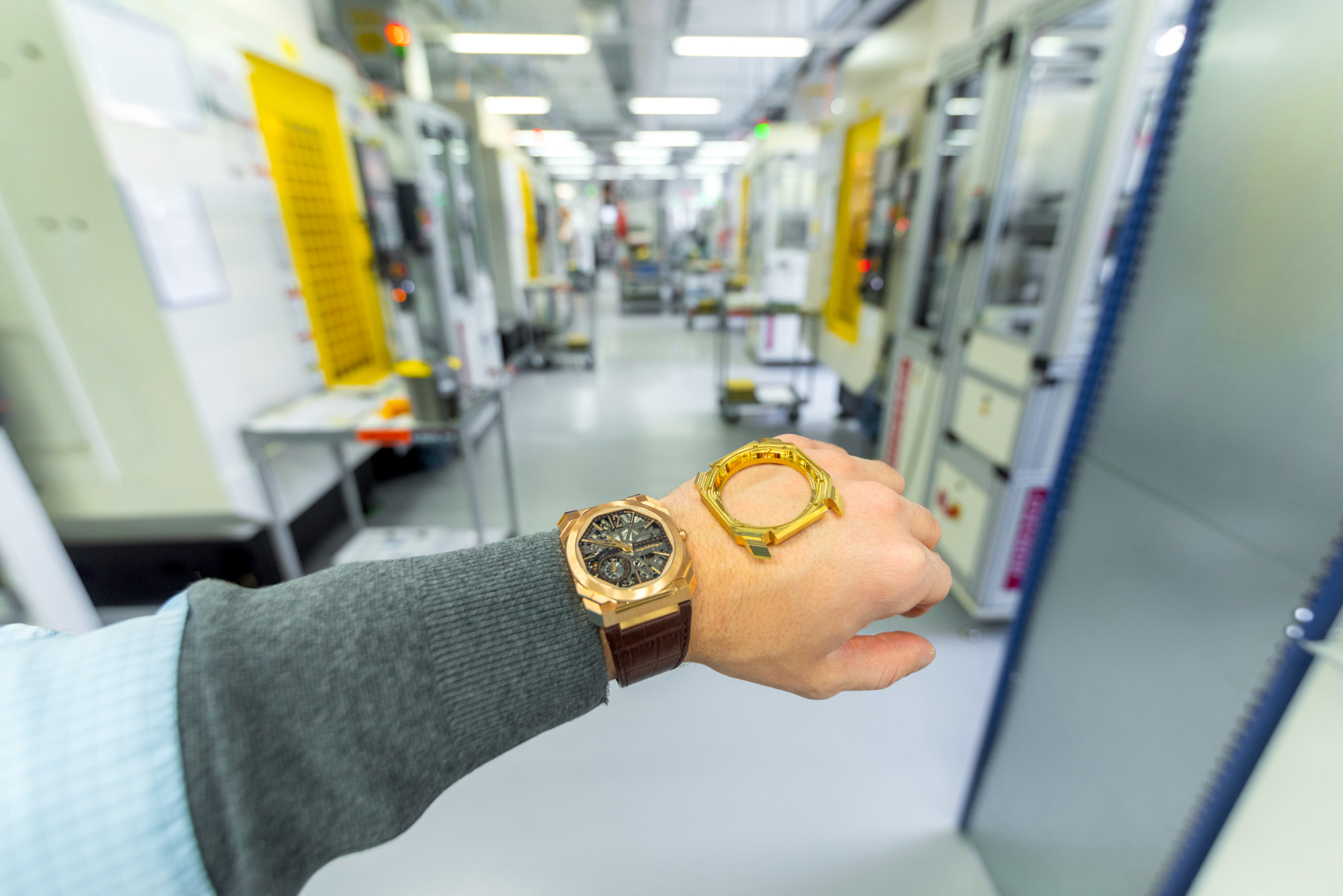
Rooms with gigantic machines the size of an SUV — and the cost of many — are in operation in Saignelégier to turn blocks of stainless steel, titanium, 18k gold, and 950 platinum into Bulgari-styled cases and bracelets. In pursuit of thinness, many case components the industry had figured out long ago, such as bezels, middle cases, and casebacks, had to be fundamentally reengineered to be able to encapsulate the brand’s ultra-thin movements and dials and to safeguard them with impressive water resistance. Bulgari’s teams operate and program all these mighty complicated and costly machines and use bespoke tools, seen in the third picture in the gallery above, to securely hold the various case and bracelet components throughout the machining steps.

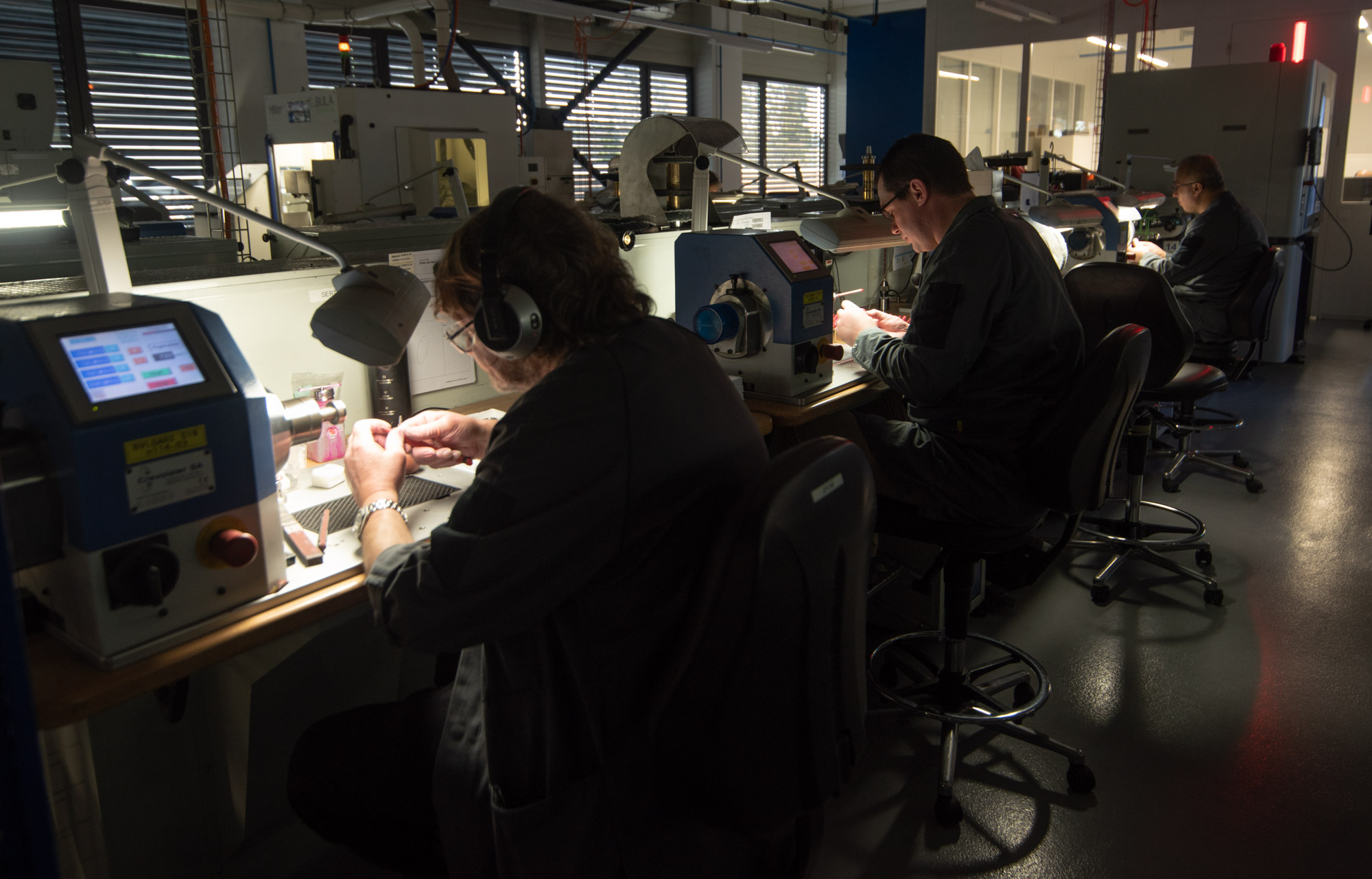
One of the many fascinating rooms here in Saignelégier is where the daunting task of case polishing is performed by Bulgari’s craftspeople. It is darker than any other in any of the facilities, with only the individual’s working area being brightly lit. Whereas watchmakers assembling movements and their sub-assemblies tend to be situated at the top floors of manufactures, allowing in as much sunlight as possible for the brightest working environments, case and bracelet polishers prefer a dark room because it absolutely minimizes distracting reflections on the workpiece. Just above a purple protective coating can be seen during select stages of case finishing — seen here as alternating surface treatments are applied by hand to the complex angular structure of the Octo Finissimo case. Other models might have a sandblasted finish, also applied by hand, for a matt, industrial, modern aesthetic most often used on titanium.
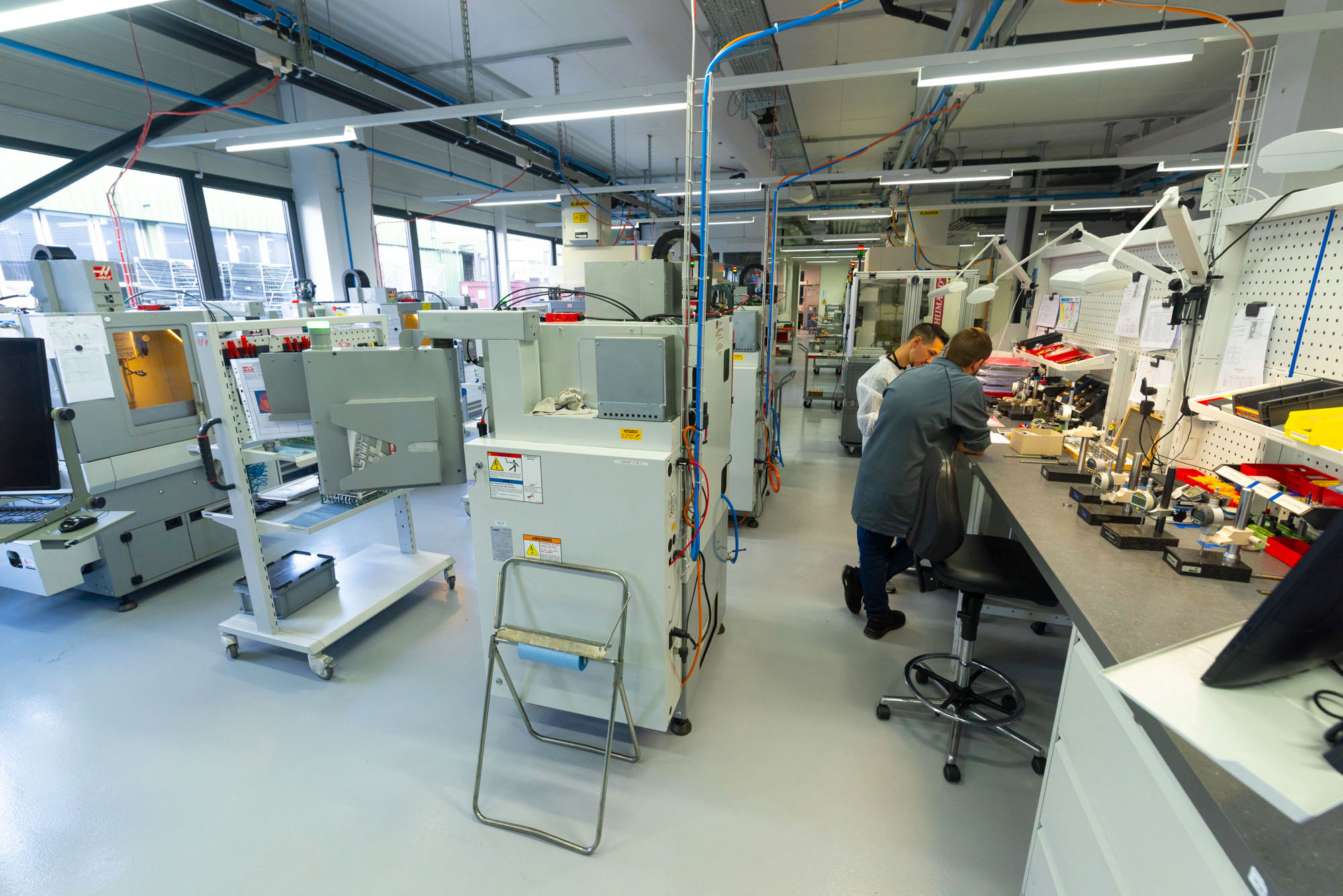

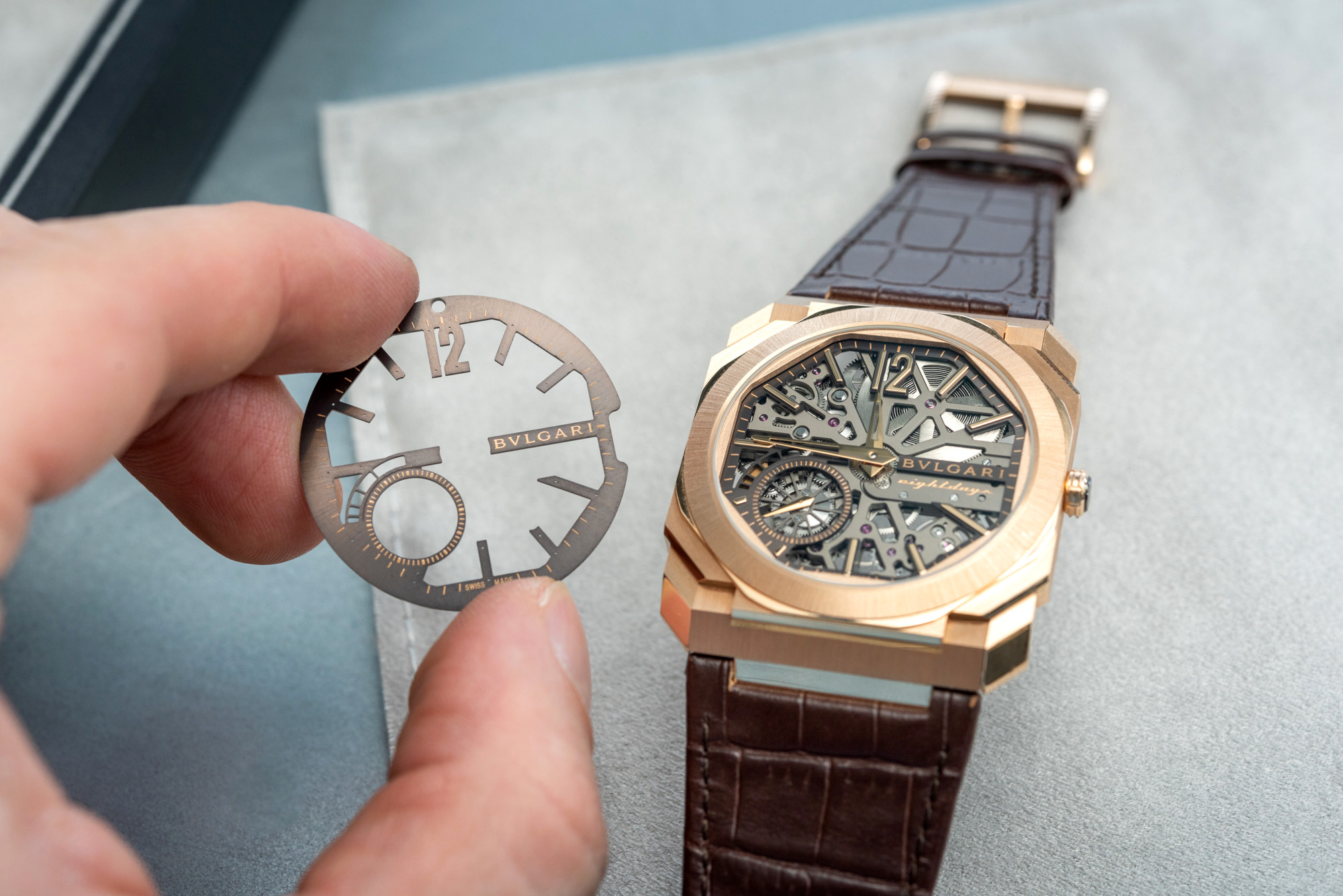
Dials of the highest precision and refinement are now produced under the same roof as cases. This is the result of a transformation that culminated in 2019 when Bulgari merged its La Chaux-de-Fonds-based dial factory with the Saignelégier case production facility. The goal? To experiment with something completely new that would, again, only be an option for those with a fully integrated manufacturing background: To combine the various skills and expertise specific to dial and case production. As was the case with general mobility, the same restraint and conservatism hold true when it to the various fields of expertise: Craftspeople dedicated to one field are well-known across the industry to have little to no desire to bond with others from other fields.
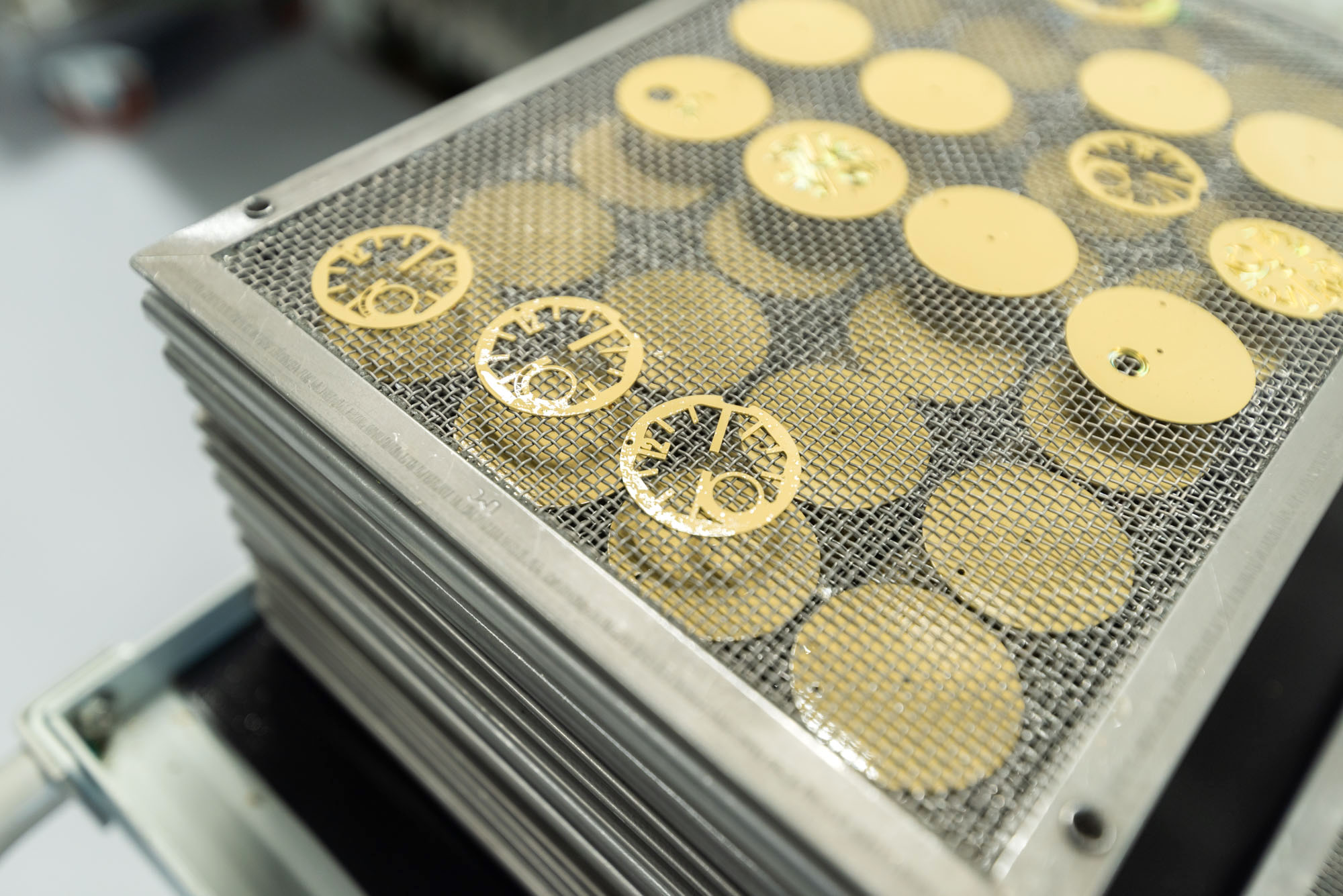
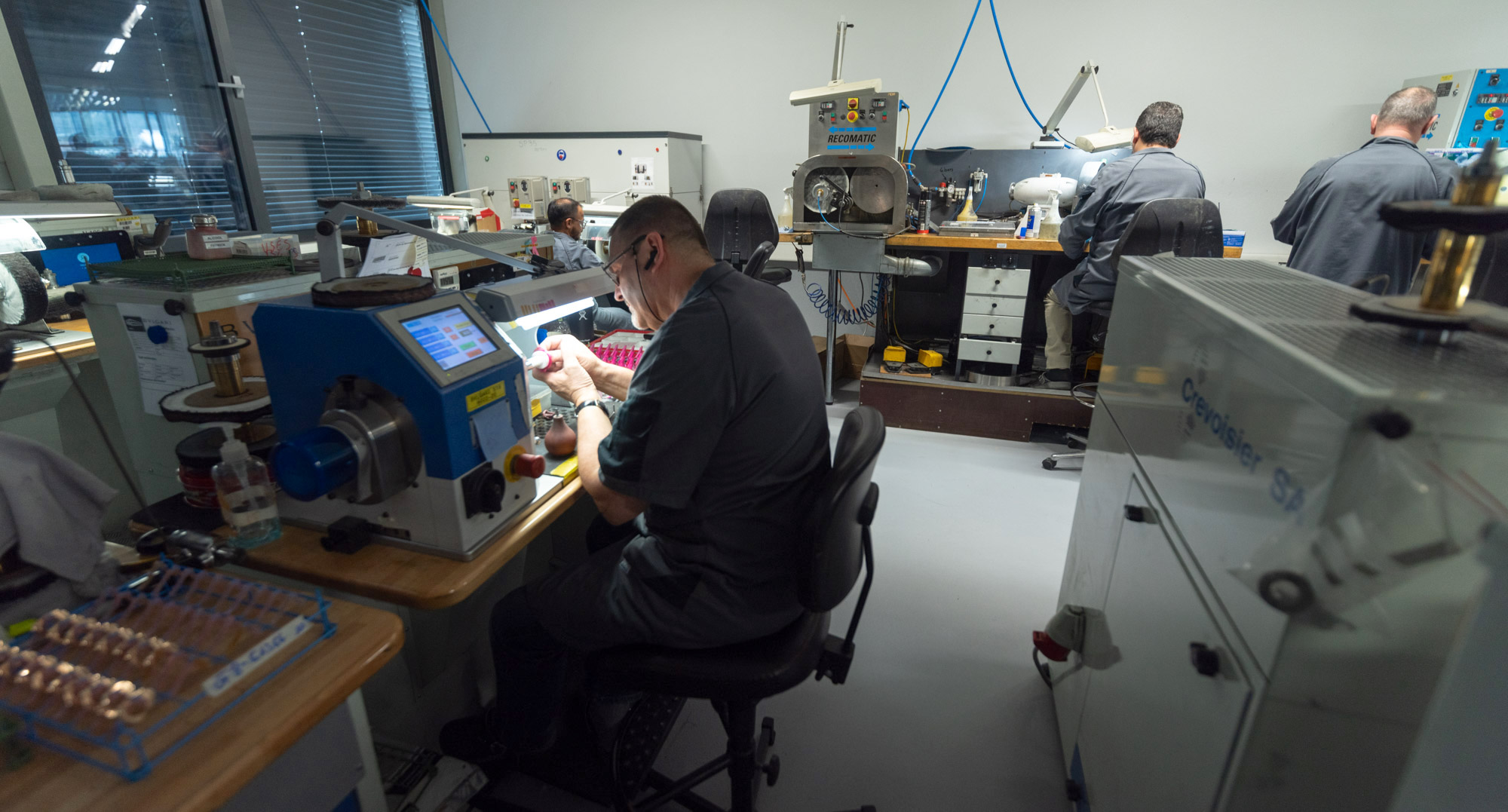
It’s nothing personal, just a logical intention to safeguard one’s own traditions, carefully developed skillsets, and know-how, and an understandable aversion to the potential introduction of confusion into any of these elements. Those initiating this transformation at Bulgari were of course well aware of these differences — they are as much an integral part of their respective facilities as anyone else. They were however intrigued by the idea of combining these different types of knowledge for they could see the underlying similarities. Cases and dials are extremely delicate components that can only reach their final form and outstanding quality after receiving a lot of care and attention from dedicated craftspeople.
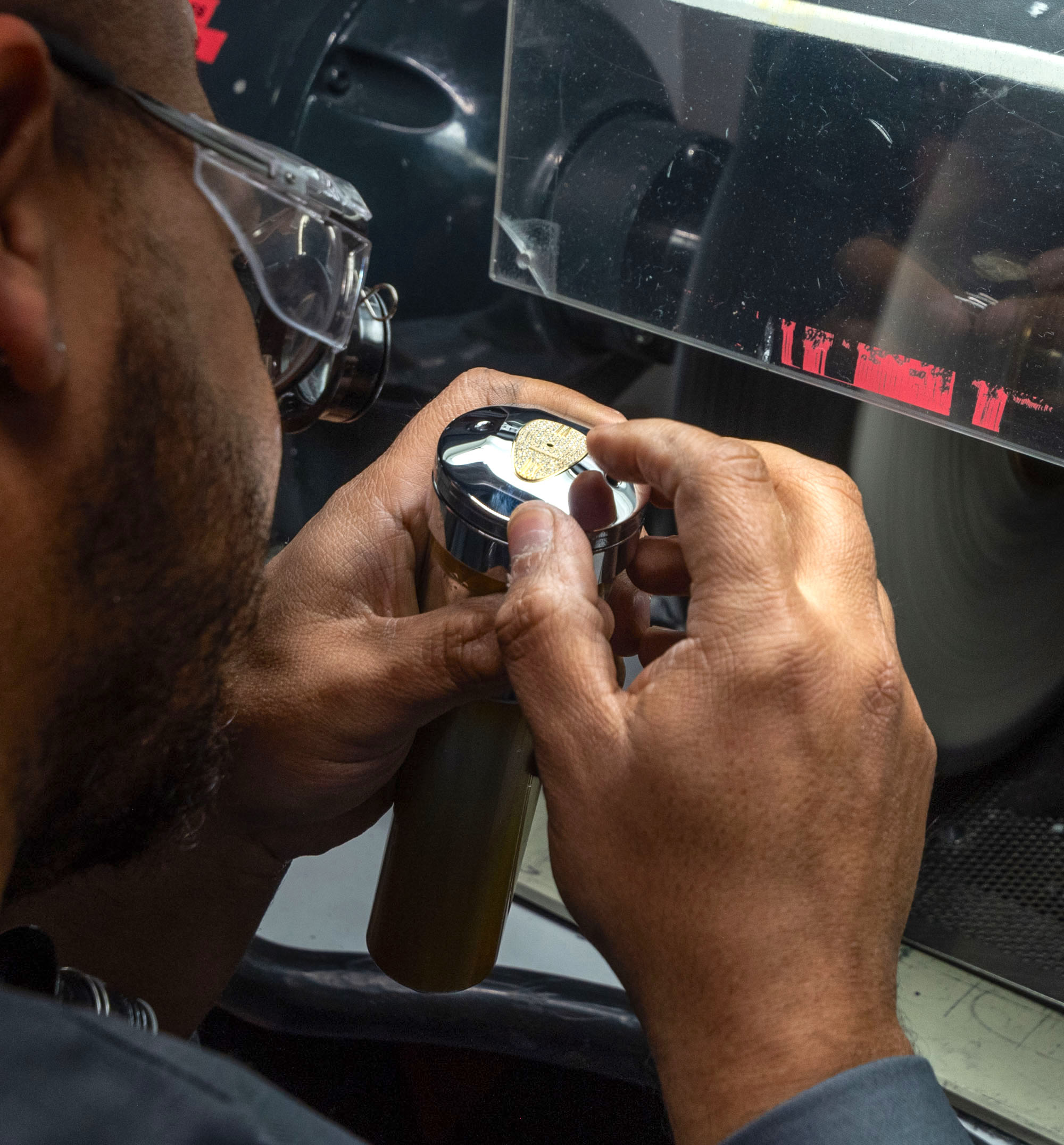
More importantly, at Bulgari, there always are new challenges to be overcome in dial and case production, as the design and engineering team keeps pushing the boundaries of these fields. New surface treatments and yet thinner executions on dials, cases with unprecedented angularity and complexity in an extremely narrow space — challenges like these have forced Bulgari into new ways of problem-solving, as it could count on no one else but itself to work out the solutions. As it turns out, by merging the dial and case manufacturing facilities, certain skills, dexterous moves, and novel approaches could be implemented across these two hitherto strictly separate fields, yielding much-needed solutions in a timely manner, allowing Bulgari to stay true to the original concepts it has dreamt up for its various watches and movements. The exact specifics of how these very different schools of watchmaking have merged will of course remain a closely held secret for Bulgari, but this years-long process of bringing facilities, machines, and, most important, people, under one roof has given the manufacture a unique edge.
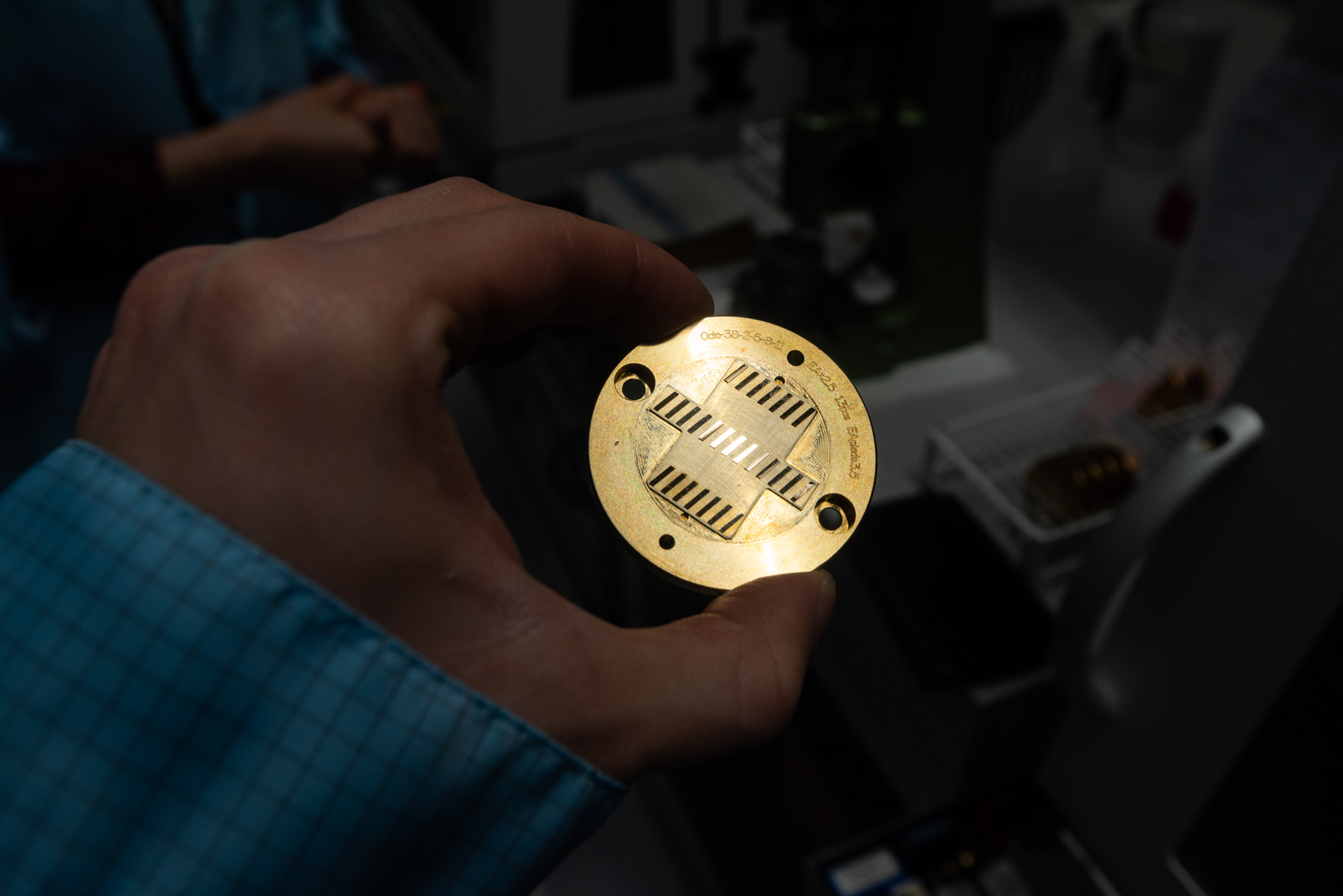

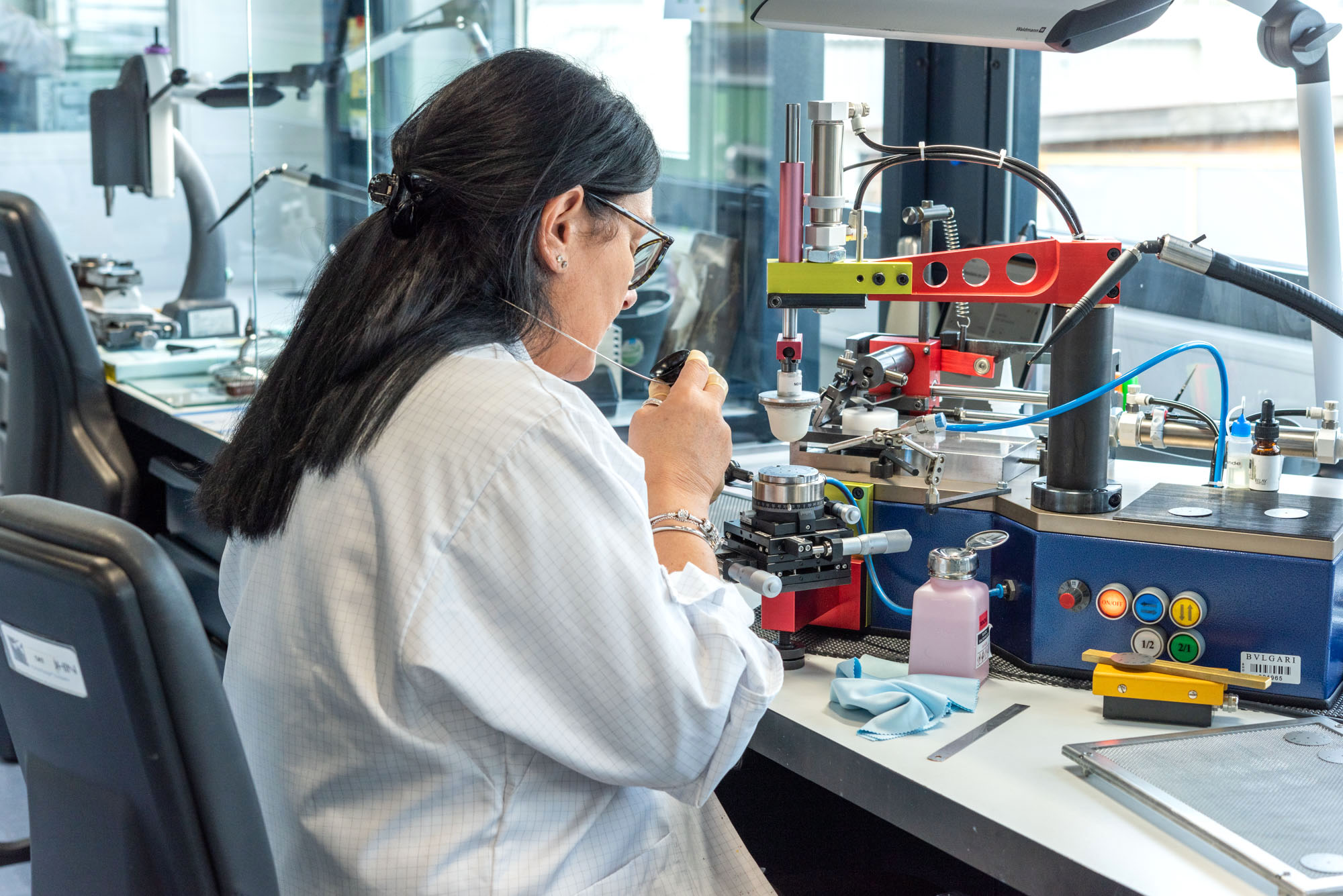
From milling, decorating, and soldering individual hour markers through multi-layer pad printing to enameling, Bulgari’s dial manufacture actively utilizes its vast set of tools and expertise. Producing a dial is every bit as difficult as it is to make a frantically ticking movement, the tolerances are absolutely minuscule in a structure that is easily of comparable complexity. A dial, even if painted entirely by hand and fired in a kiln on multiple stages, has to be perfectly even and incredibly thin, otherwise, the hands won’t be able to pass over it. It is also the component that is rightfully referred to as the face of the watch, and the part the owner will likely spend the most time looking at and scrutinizing, leaving no room whatsoever for the slightest blemish or error.

A true watchmaker will produce as many of its movement parts as possible, including wheels, gears, and pinions — and that is exactly what Bulgari performs in its Le Sentier facility, in The Watch Valley. In the images above, a freshly made component is being checked with an accuracy of 1/10,000th of a millimeter, or a tenth of a micron. It is a rare look at the tolerances each and every part of an ultra-thin movement has to comply with, revealing the manufacturing know-how and attention to detail practiced within Bulgari’s walls. Hundreds, sometimes up to a thousand of parts need to be designed, prototyped, made, checked, decorated, and assembled to make up a movement and power one of Bulgari’s watches — and it is this know-how and in-house capacities that have enabled the brand to develop, produce, and bring to market eight world-records in watchmaking in the scope of just 10 years.
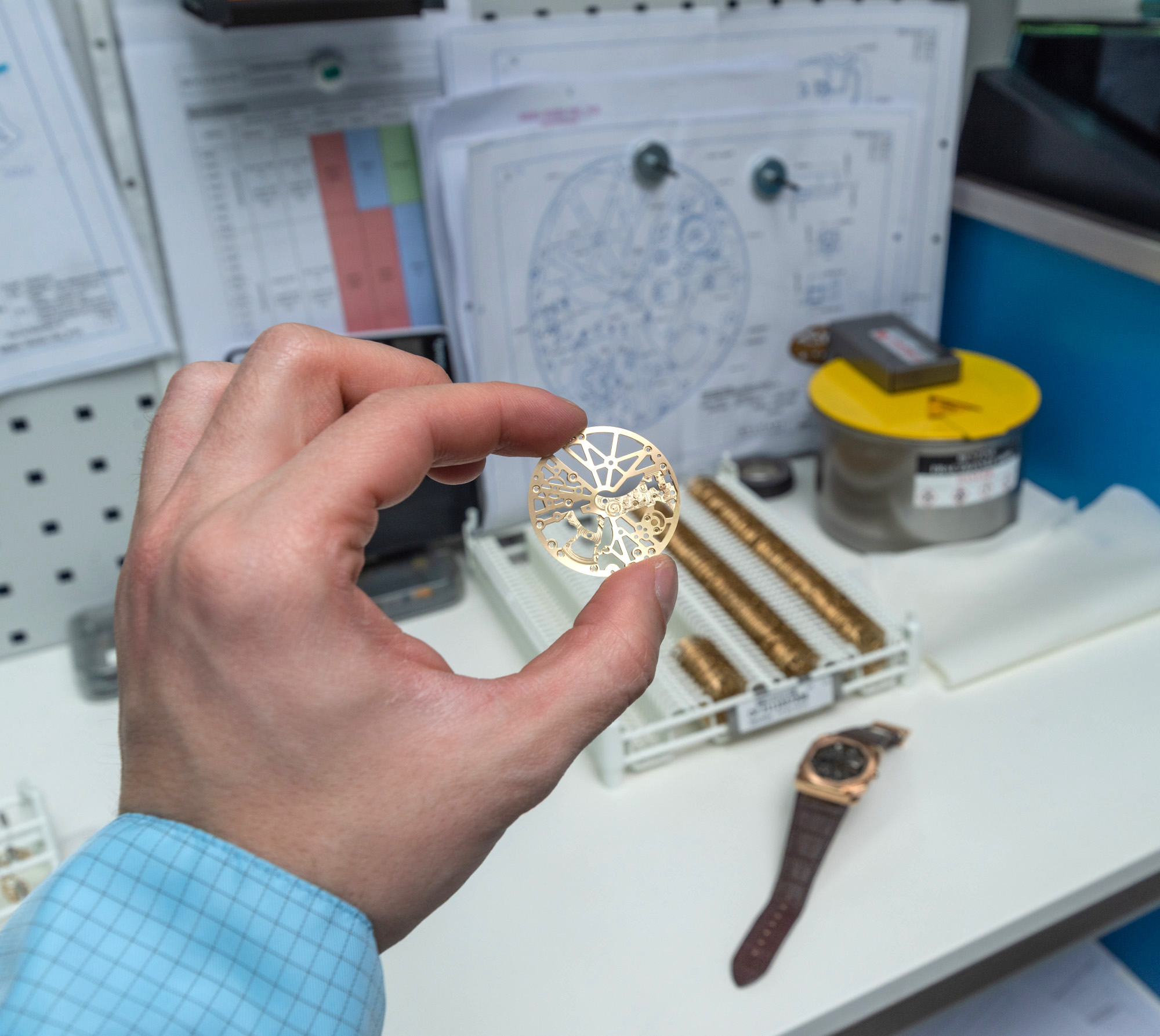
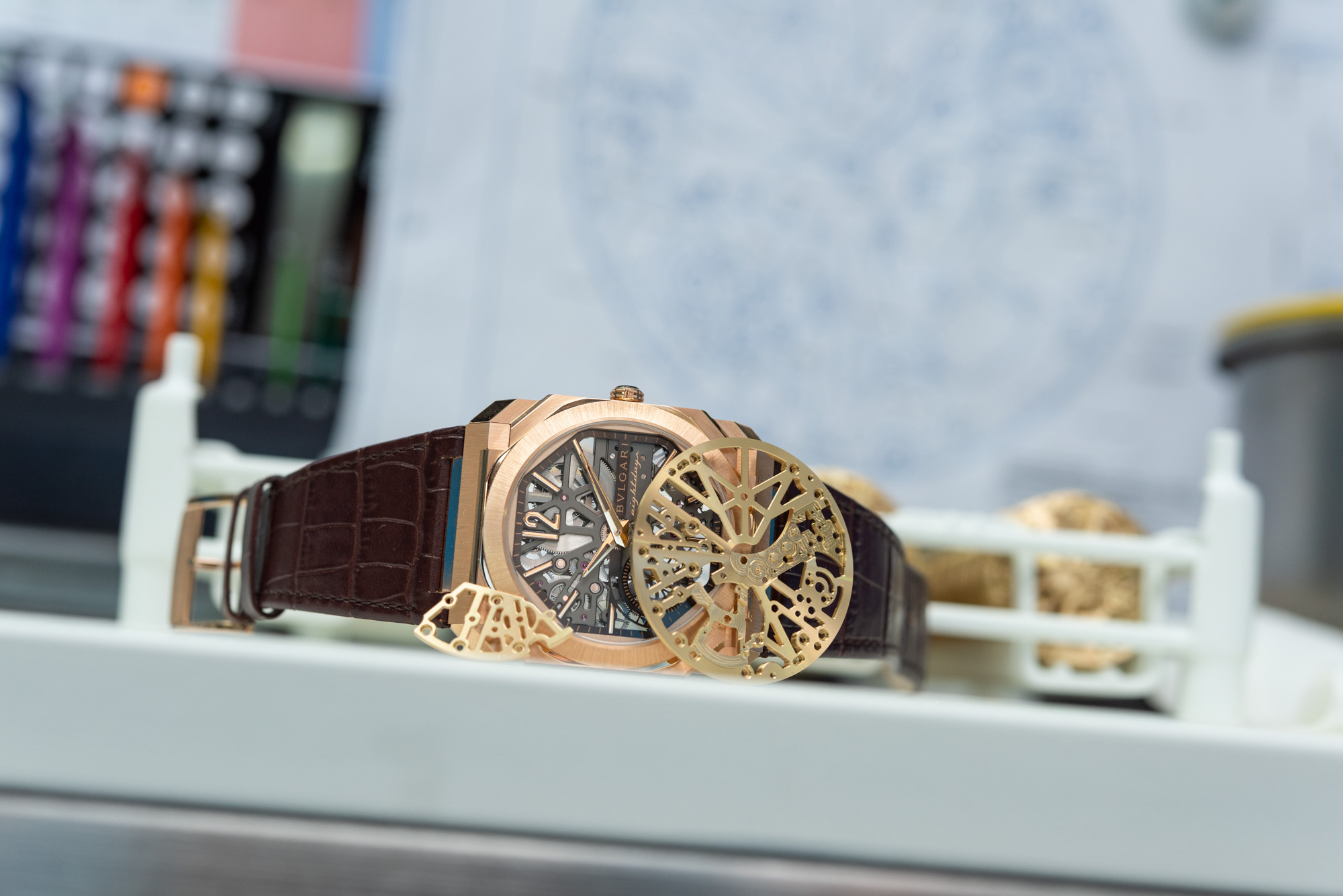
Larger movement parts such as plates and bridges are also developed and produced by Bulgari for its in-house movements, like the BVL199SK skeletonized, ultra-thin, eight-day power reserve movement that’s inside the Octo Finissimo Skeleton 8 Days. Every hole that will fit a jewel is crafted with a tolerance of just a few microns, i.e. a few thousandths of a millimeter, with complex, three-dimensional shapes, curves, and bridges integrated into the main plate in pursuit of ultimate thinness. As a result, the eight-day movement is a stunning 2.5mm-thick, and yet offers every bit of depth and intricacy one would expect from a high-end mechanical caliber. Components are often decorated with hand-applied perlage and hand-beveled edges.
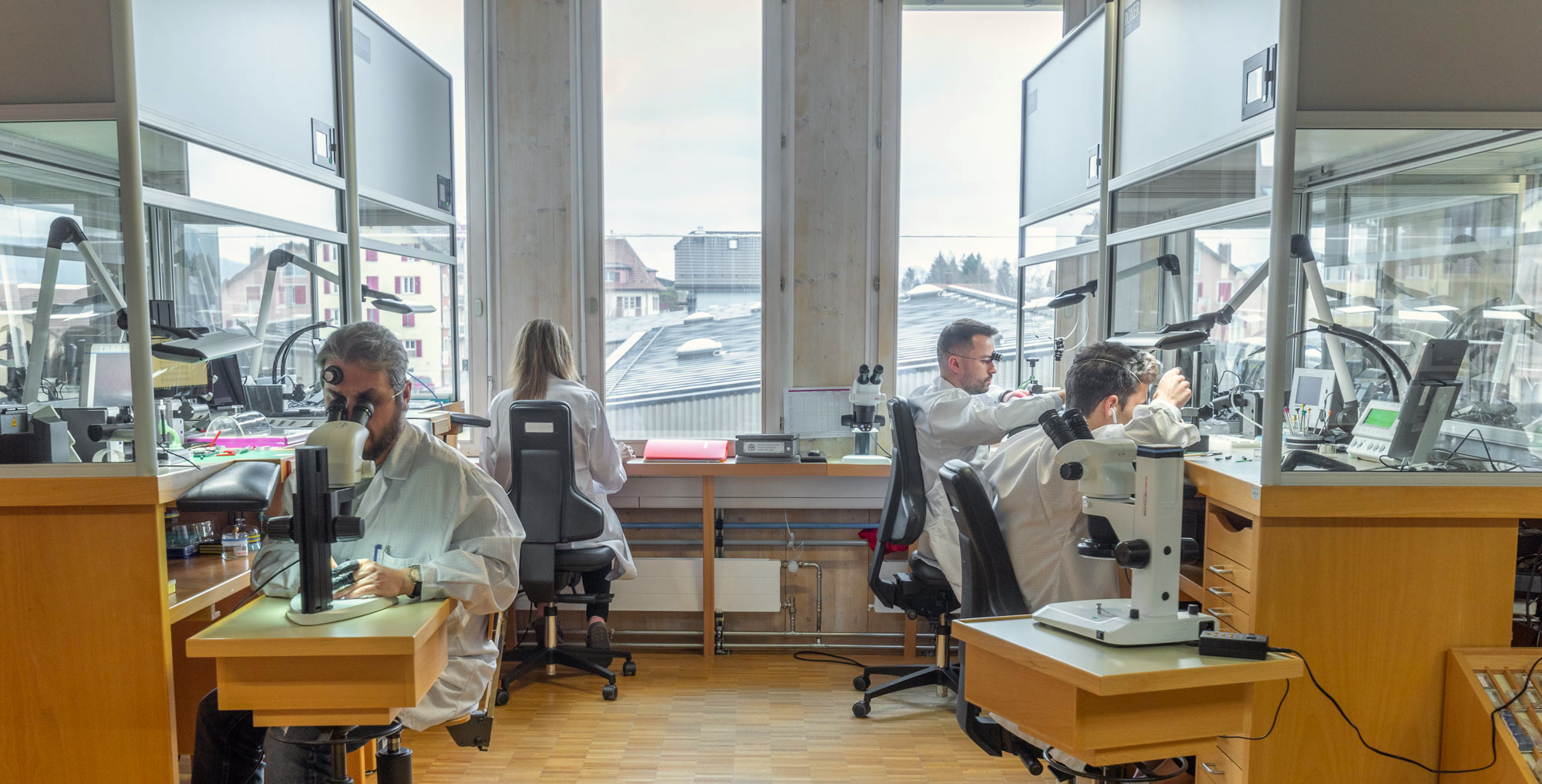
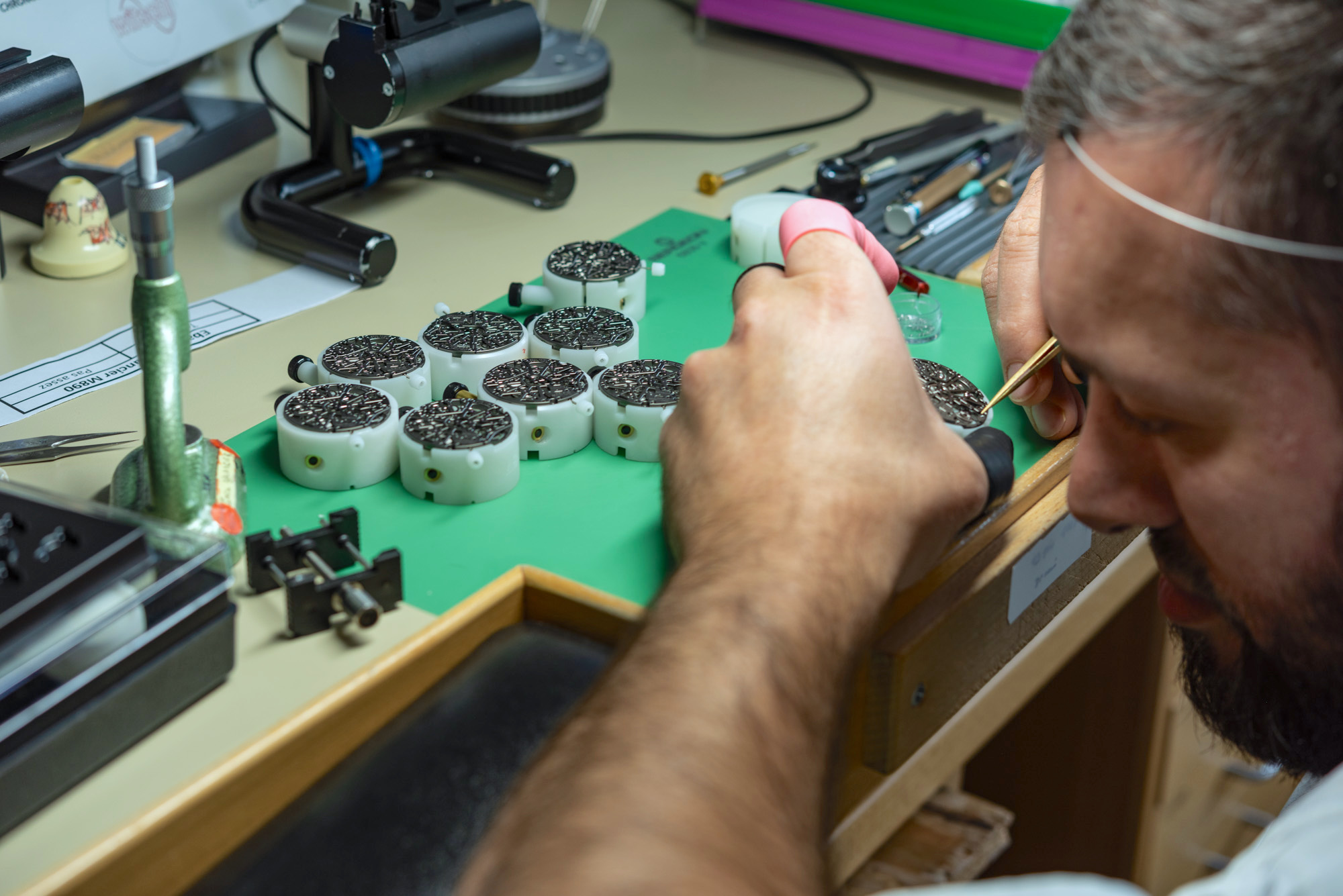
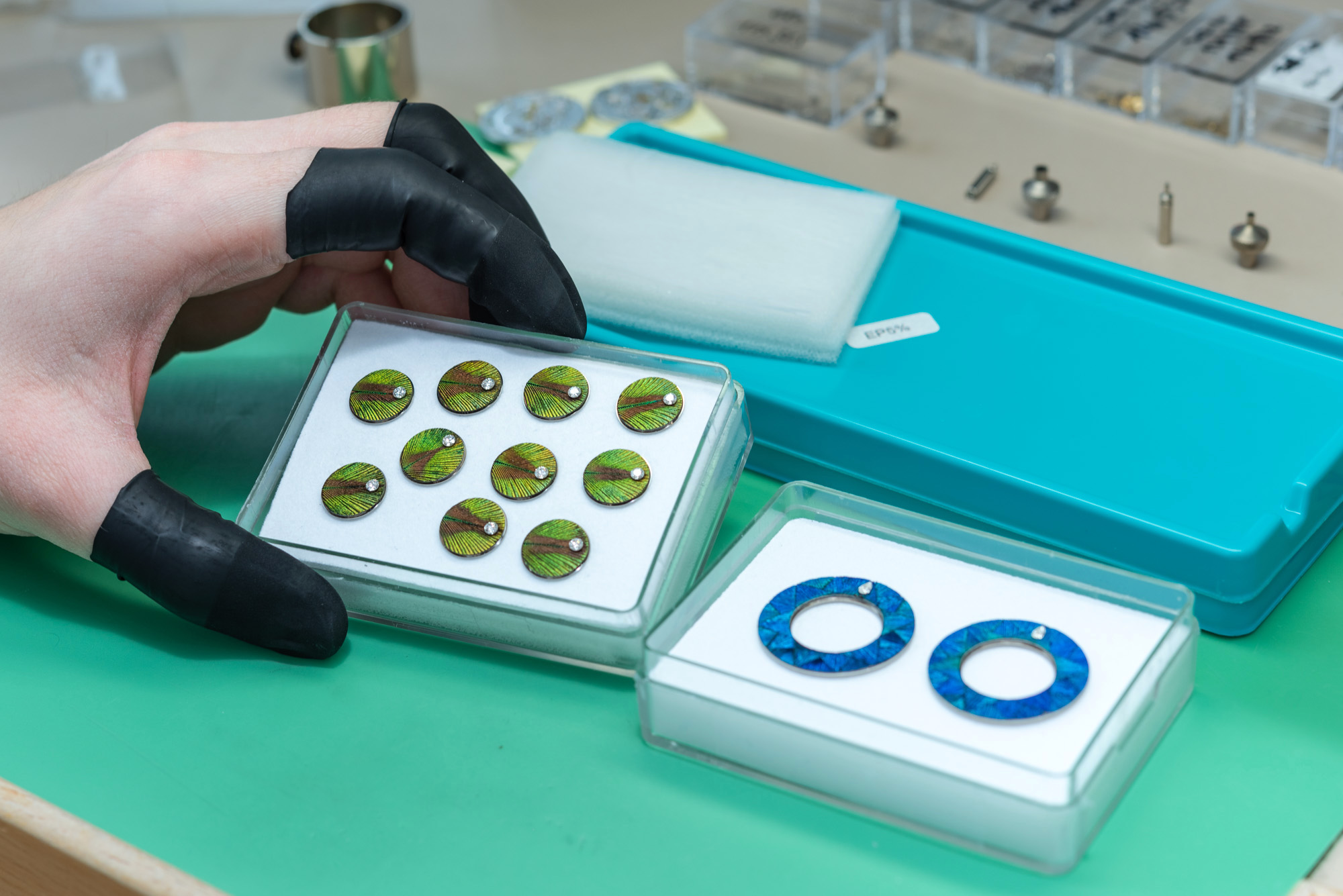
It is also here in Le Sentier that Bulgari’s watchmakers fill a large upstairs room, with plenty of light, and perform pre-assembly and assembly tasks on Bulgari movements. Movements with extremely delicate parts are very much common here, but certain Bulgari creations tend to push the boundaries there, too. It is here, in this temperature and dust-controlled room that special dials and “hands” are fitted onto Bulgari’s movements, including tiny discs with delicate, real feathers and a diamond, the latter to point out the actual time. The movements must be engineered to provide ample torque to drive these discs that tend to be several times as heavy as filigree watch hands of traditional designs, and the assembly and regulation must also happen in accordance with the special requirements of these unique components. Needless to say, requesting the replacement of any of these parts, should anything happen, is not something any watchmaker would want upon themselves, which is why they lean on this fully equipped and dedicated environment, set up for the assembly of all Bulgari manufacture calibers.
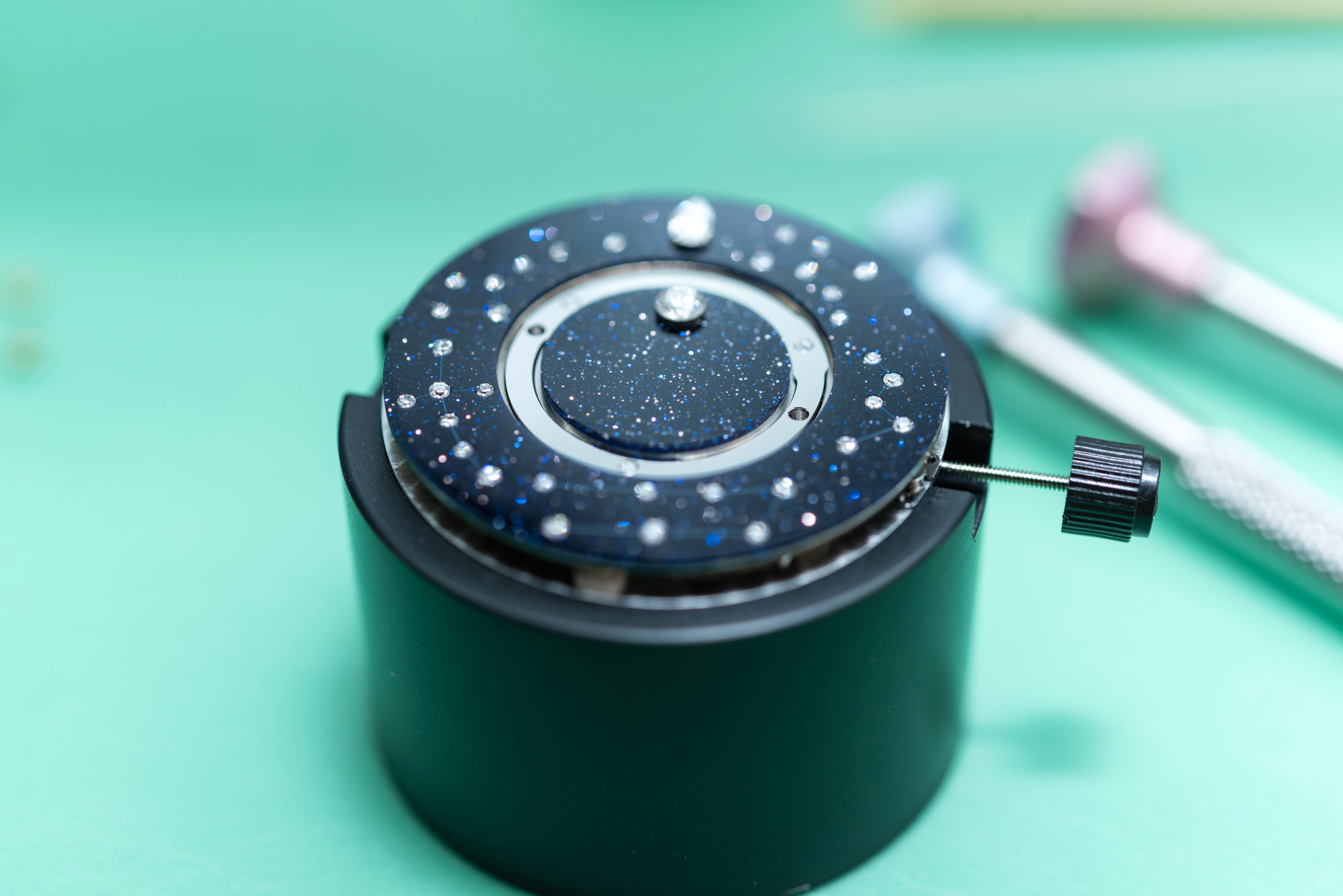
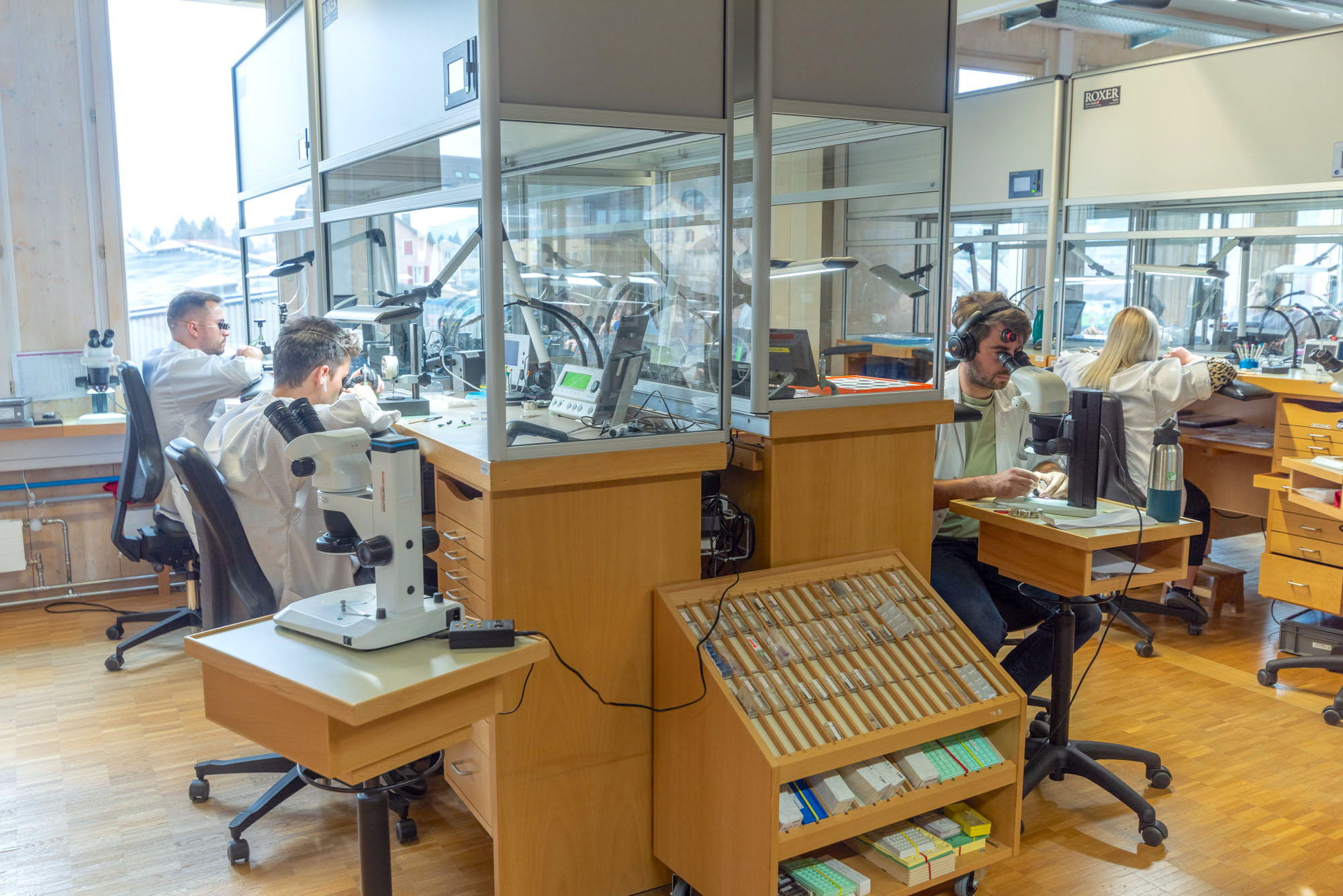

As its name implies, the Bulgari Manufacture De Haute Horlogerie is also where the ultra-high-end watch creations of Bulgari are produced, decorated, and assembled. Highly skeletonized tourbillon movements with decorative stone hour markers, true grand complication watches with 600-1,000 components powering sophisticated chiming mechanisms, perpetual calendars, and tourbillons — it is here, and only here, that they see the light of day. The eagle-eyed are invited to compare photos from this visit and those from 2015 to find many familiar faces, some of the most highly-trained watchmakers who have been honing their skills and performing their art here, in Le Sentier, at Bulgari’s manufacture all this time.
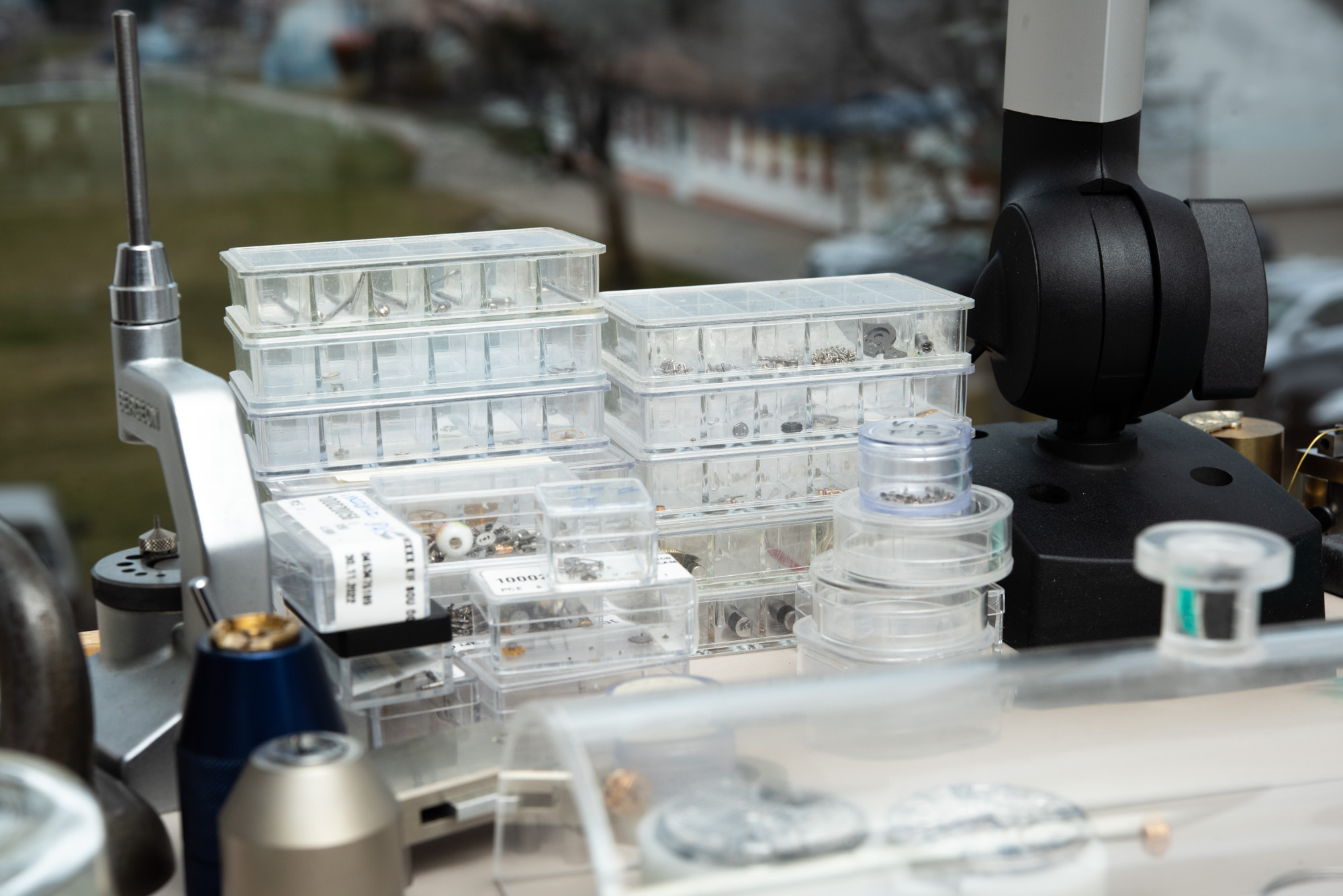
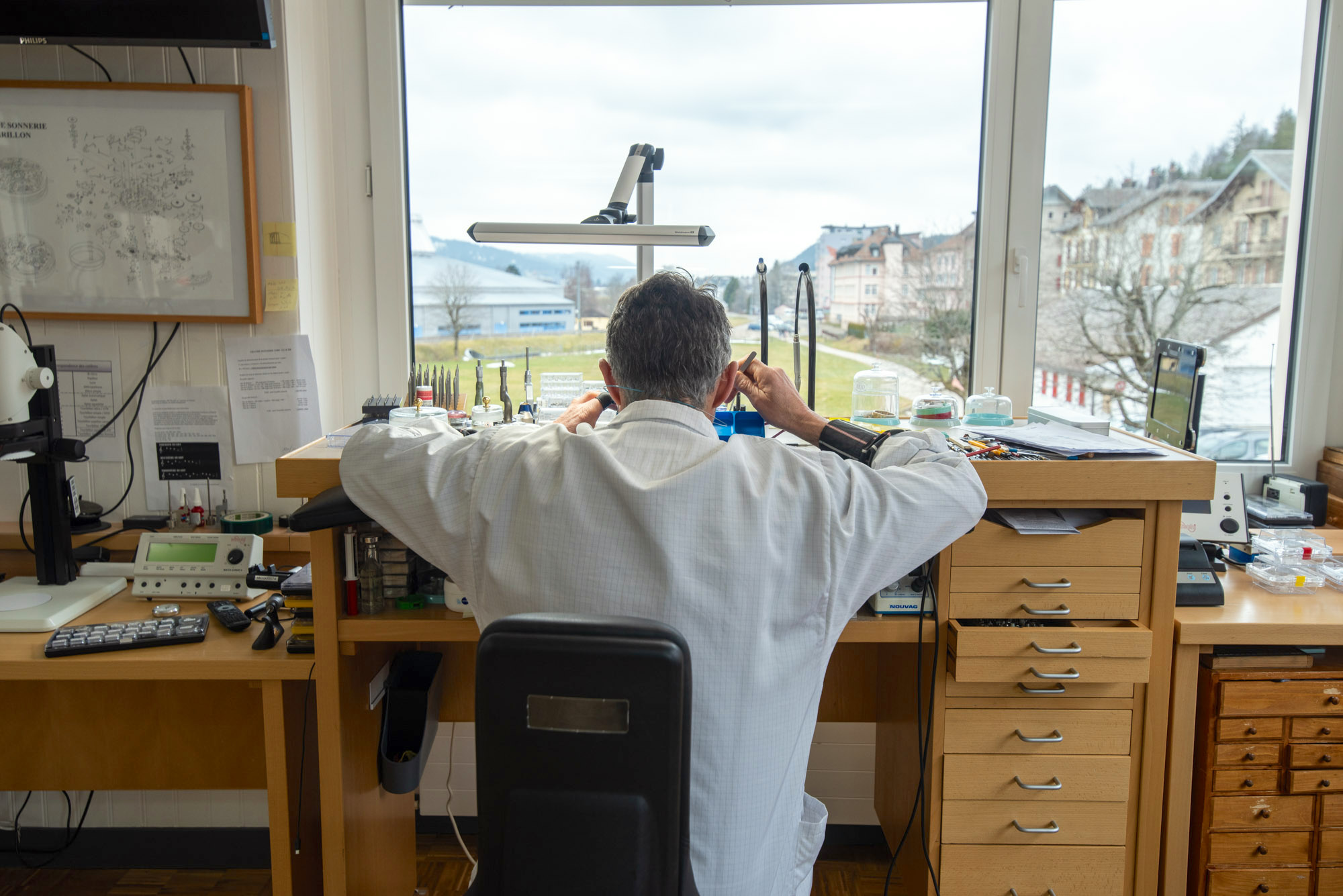
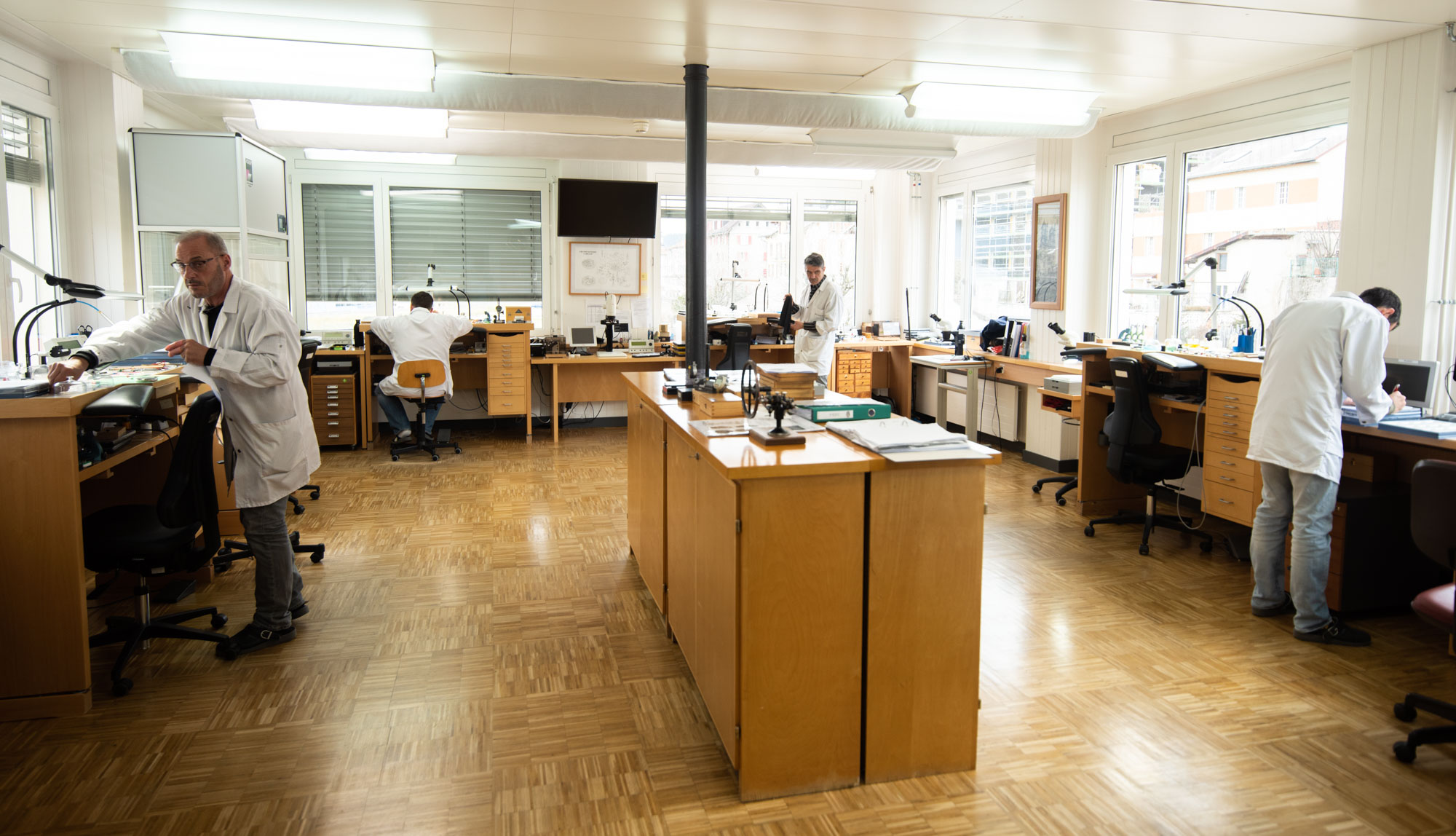
The three photos above represent a fluid motion backward. The small, transparent containers are delivered from within the Bulgari manufacture; each component within has completed its journey from the computer screens of engineers and early physical prototypes through series production and countless quality control steps to this very room and this very desk. Now it falls on this handful of watchmakers to build these parts into the most complicated watches of the brand, sometimes taking up to six months from beginning to completion on certain grand complication models.
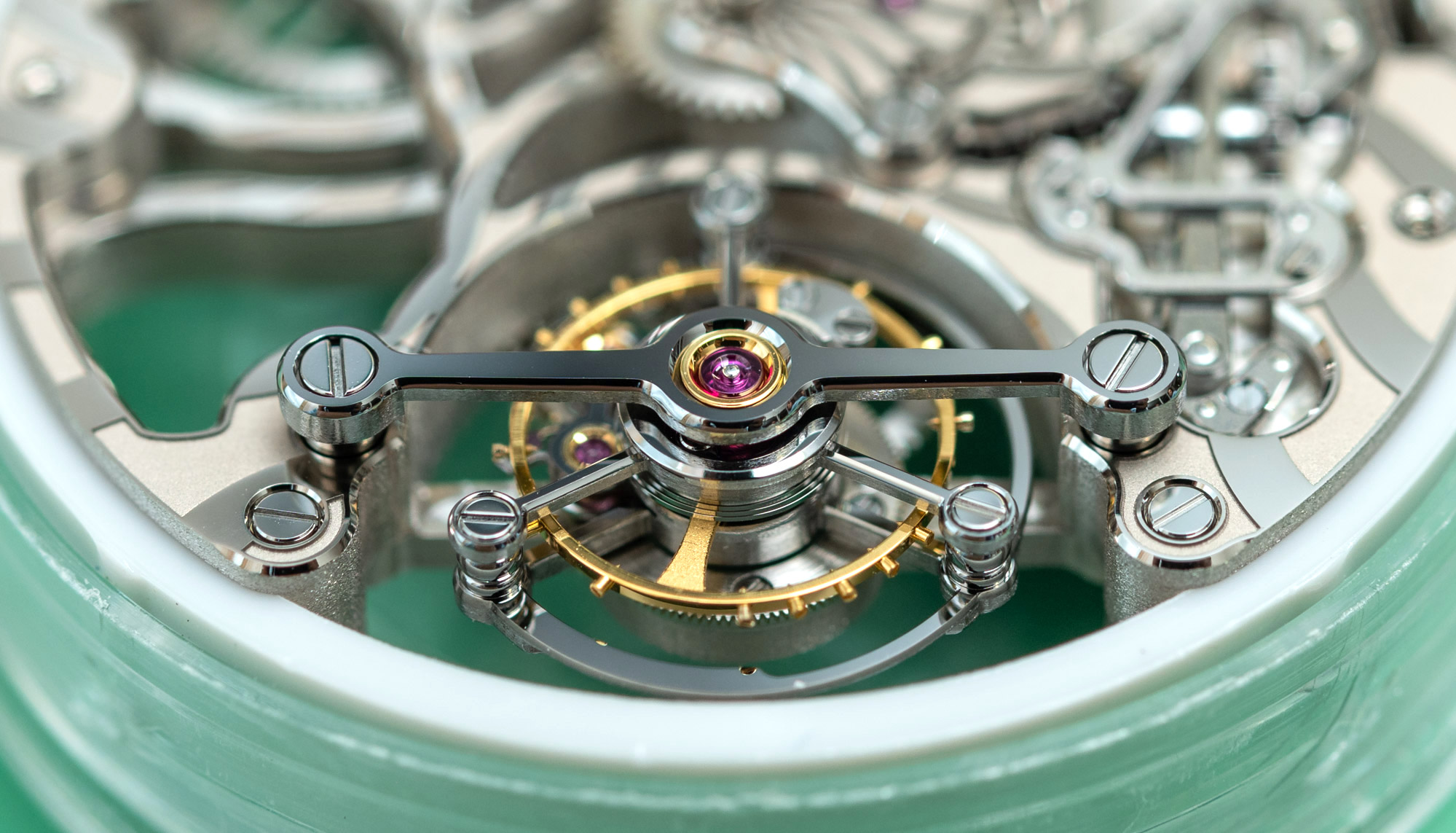
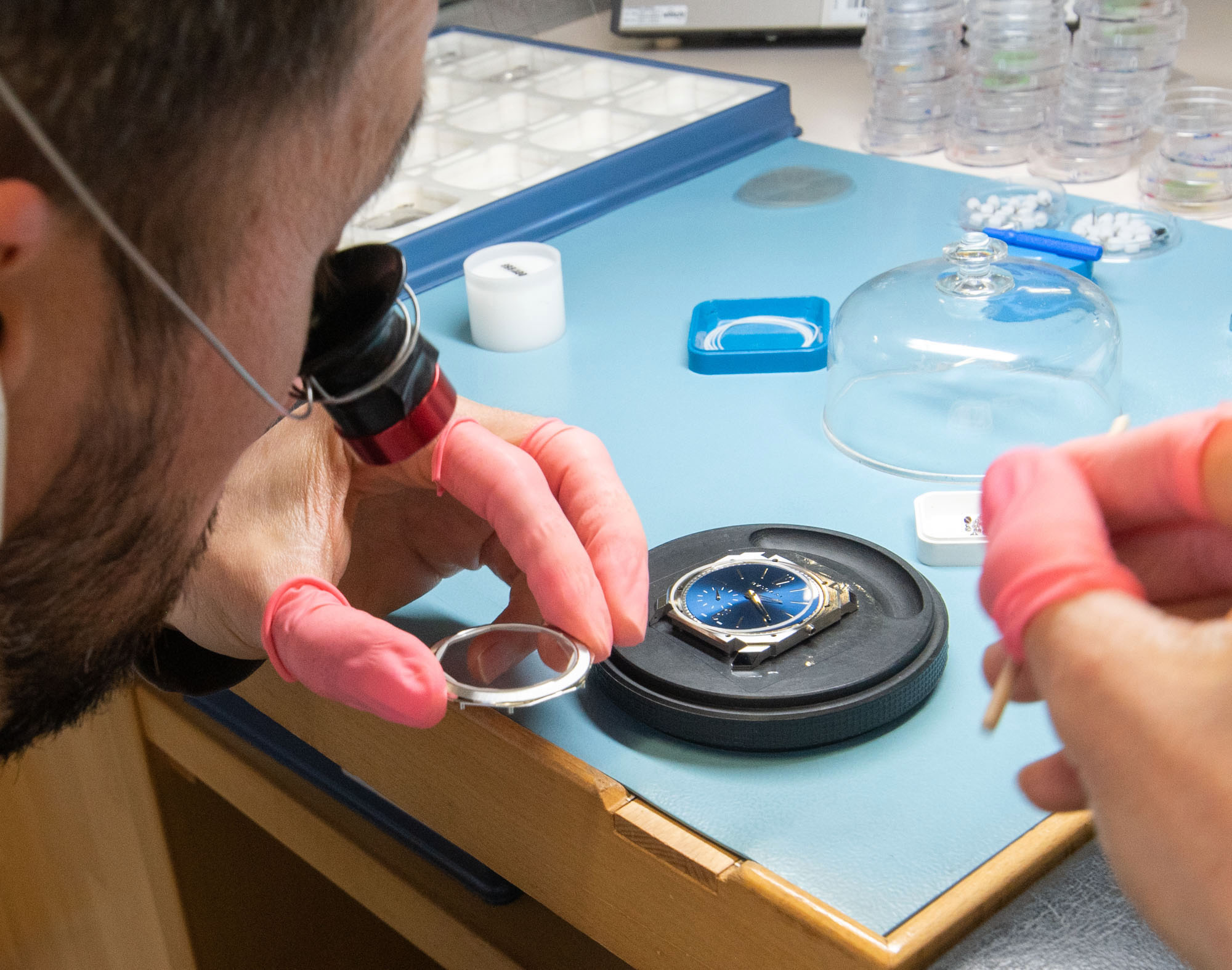
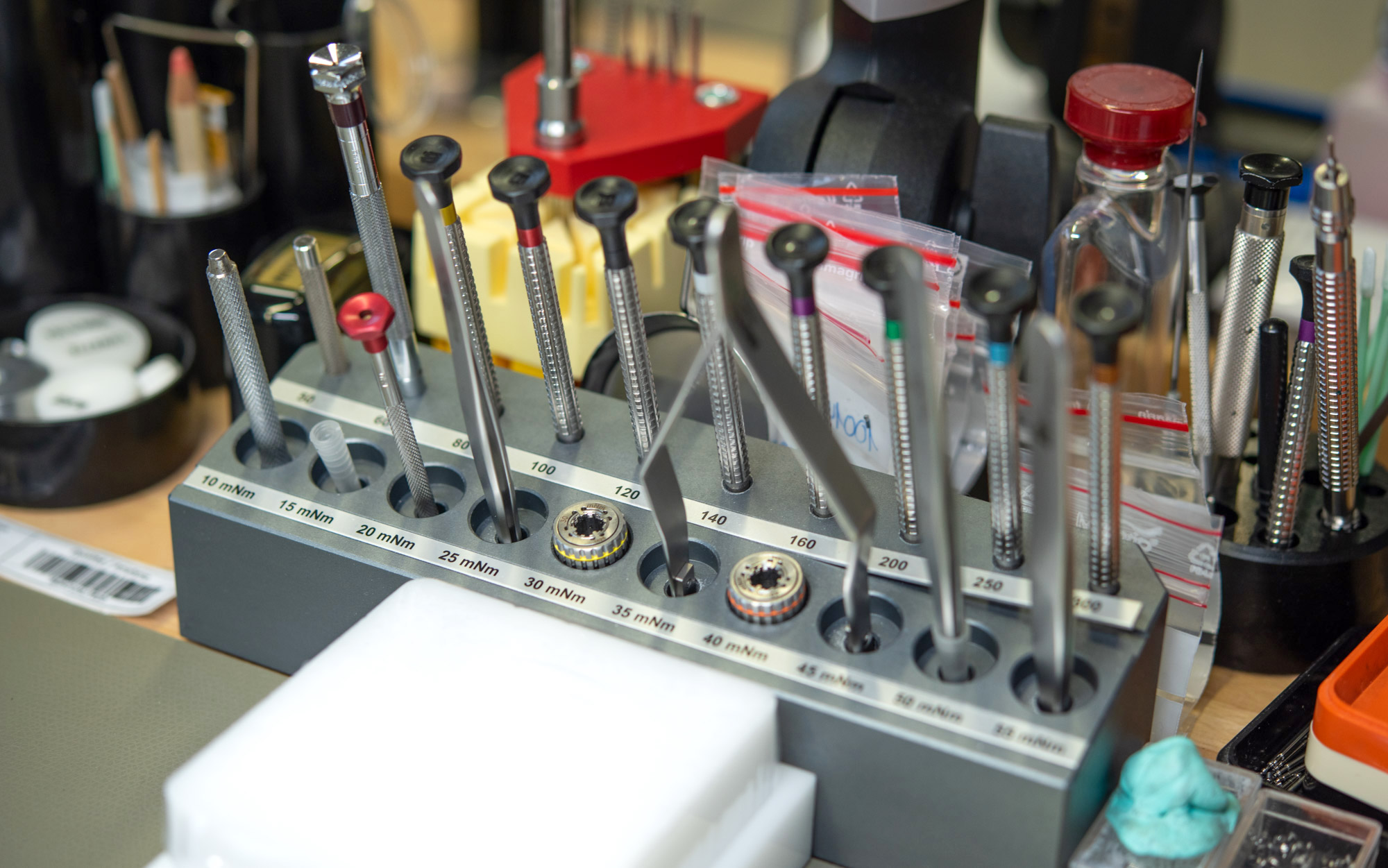
All but the haute horlogerie pieces are assembled in Neuchâtel, at Bulgari Horlogerie. It is here that the completed, tested, finalized movements, the beautifully finished dials, and the finished cases and bracelets are sent for emboîtage, i.e. casing-up, as well as the fitting of the straps or bracelet. Water resistance and pressure resistance are tested once again before the watches are given one last, final aesthetic control.
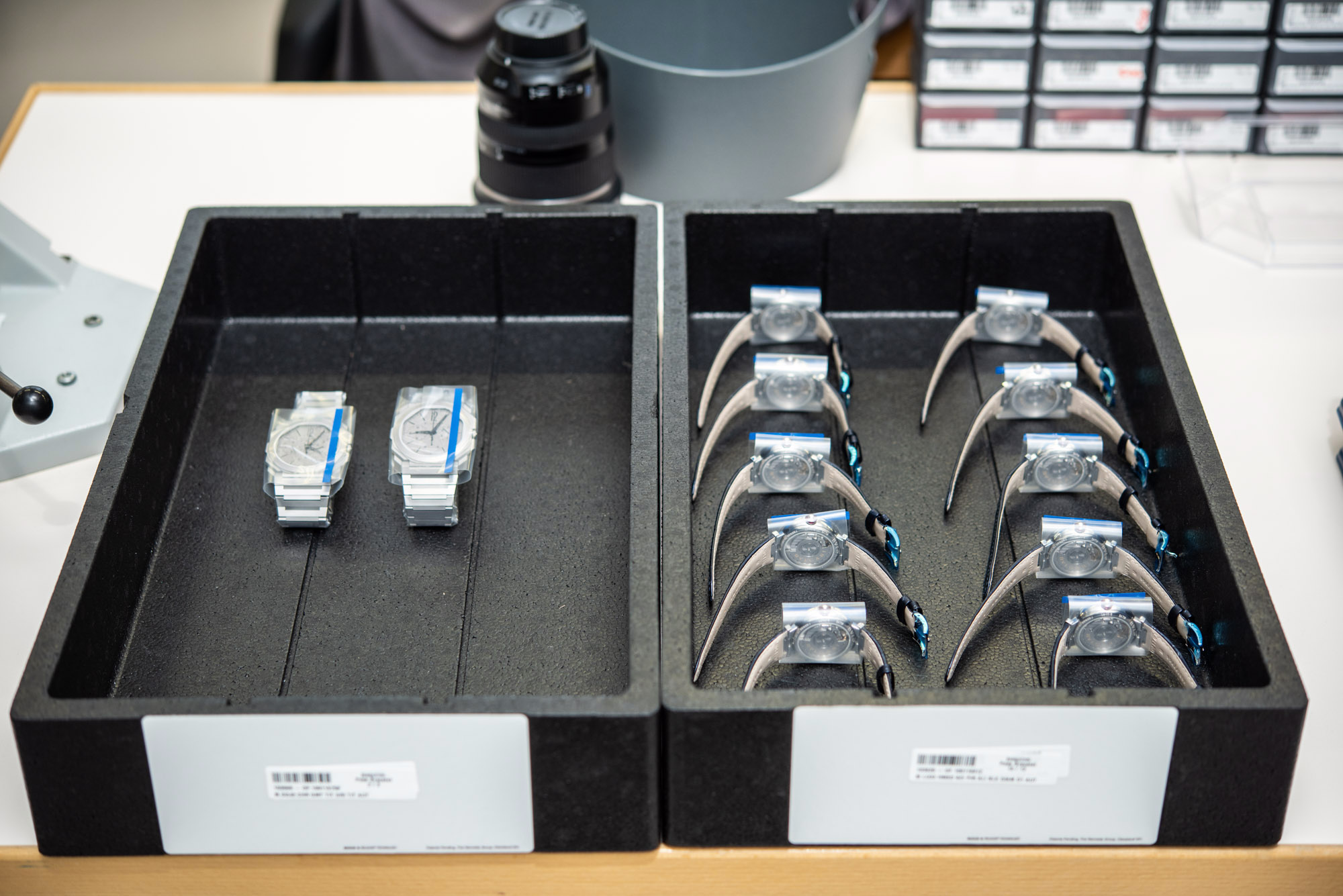
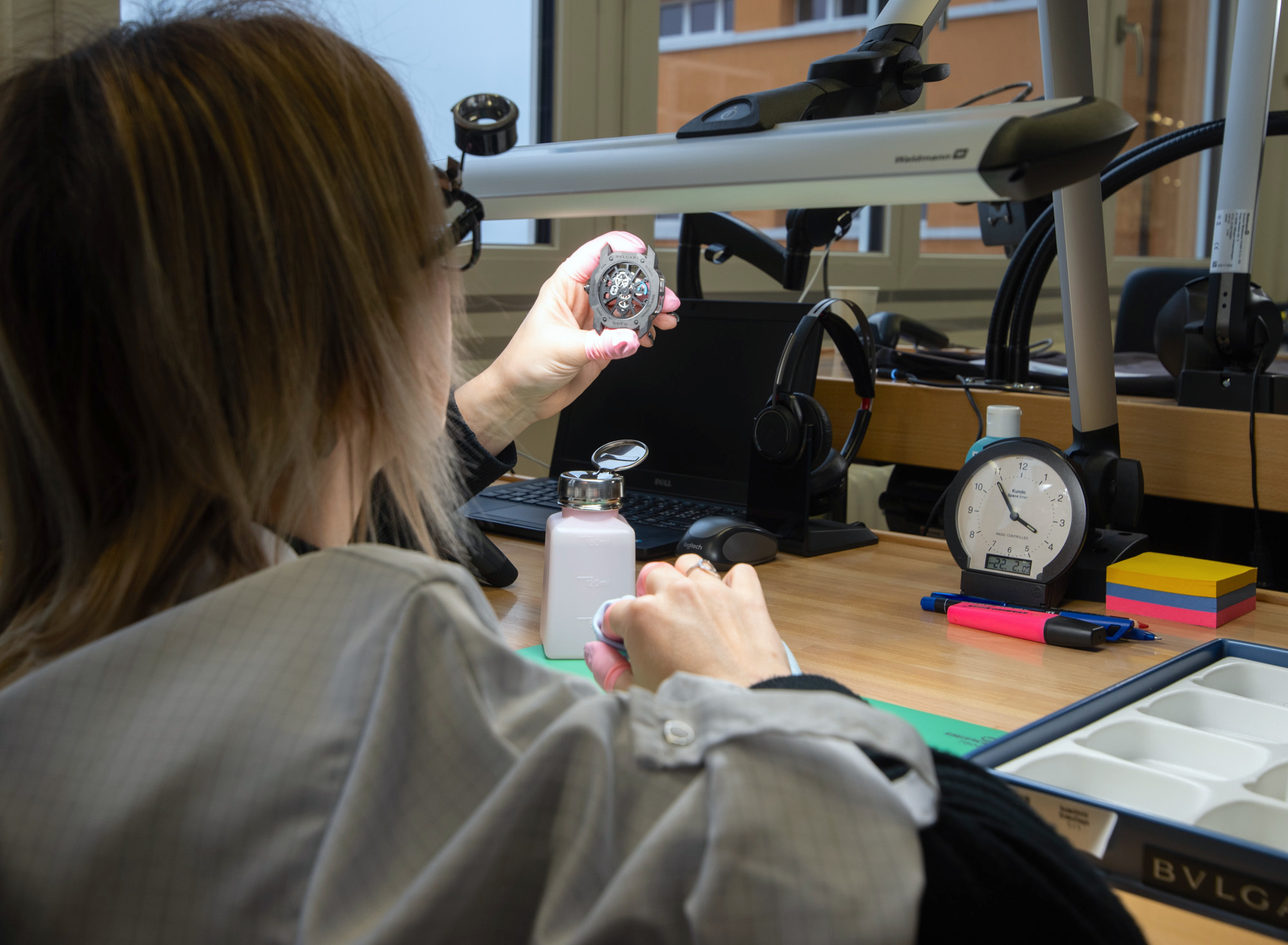
This leads us to the end of our visit with the gallery just above, showing just a few of the controlling steps that Bulgari’s craftspeople perform hundreds of times every day as part of their pursuit of uncompromised quality. It is safe to say that a Bulgari watch, and all its components, produced within the walls of the integrated Bulgari manufacture have been checked tens of thousands of times along the way. One would expect such dedication but it truly is something special when applied in practice.
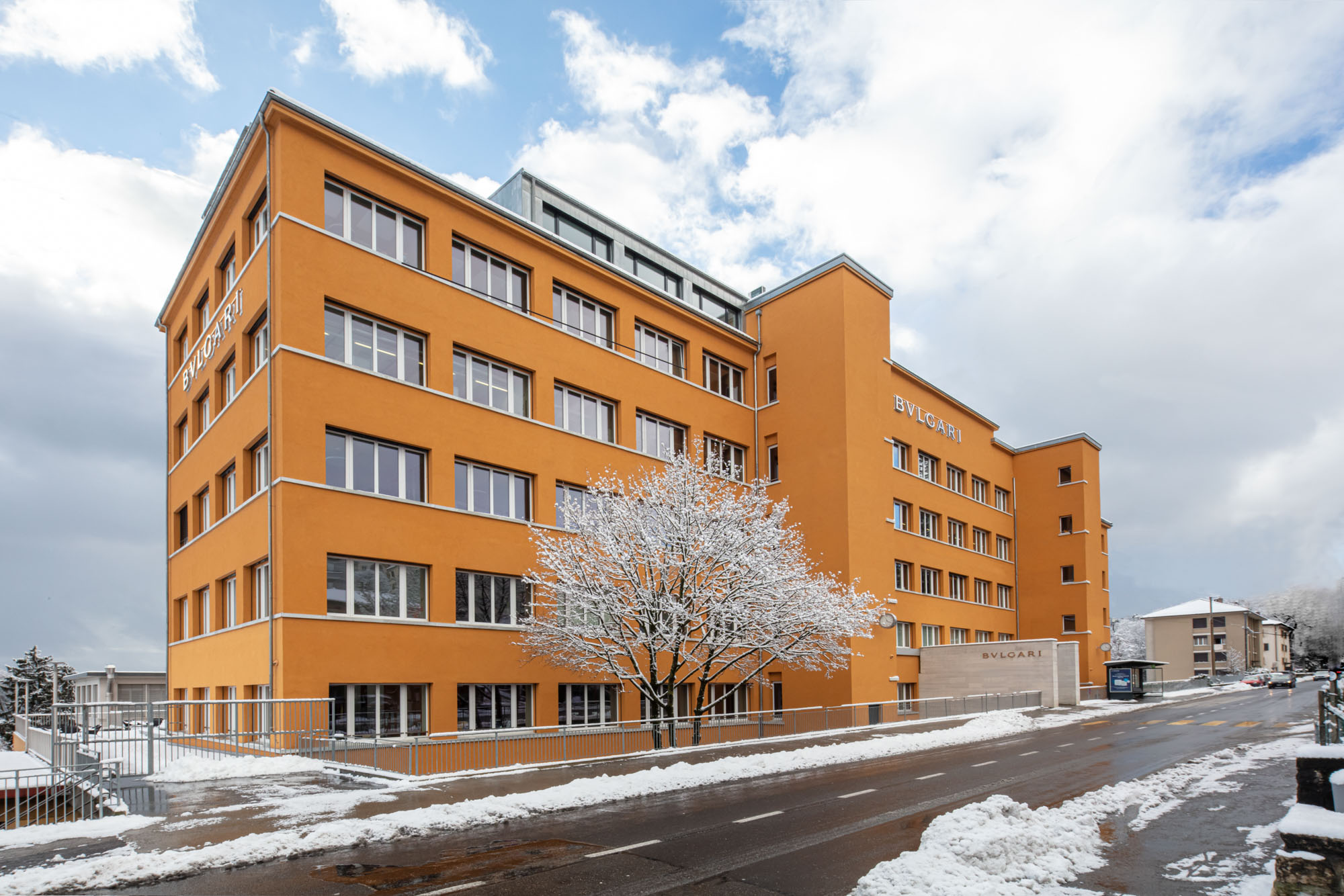
From design and development through production and assembly to final quality control, Bulgari has dedicated tremendous effort, energy, and resources to make the most of its integrated watch manufacture. By merging its proprietary case and dial production facilities it has brought its people closer together, successfully gathering them around the goal of chasing record-breaking thinness and all-encompassing quality of execution, as reflected in its eight world records and an established collection of highly creative watches that are unique both inside and out. You can learn more at the Bulgari website.
Sponsored Posts are a form of advertising that allows sponsors to share useful news, messages, and offers to aBlogtoWatch readers in a way traditional display advertising is often not best suited to. All Sponsored Posts are subject to editorial guidelines with the intent that they offer readers useful news, promotions, or stories. The viewpoints and opinions expressed in Sponsored Posts are those of the advertiser and not necessarily those of aBlogtoWatch or its writers.
